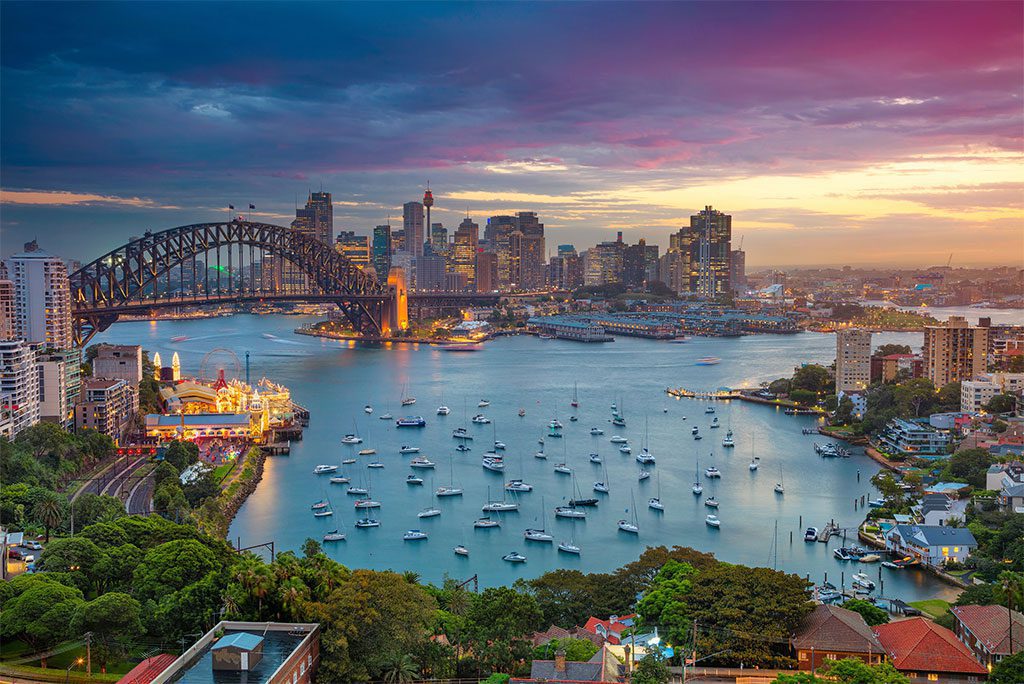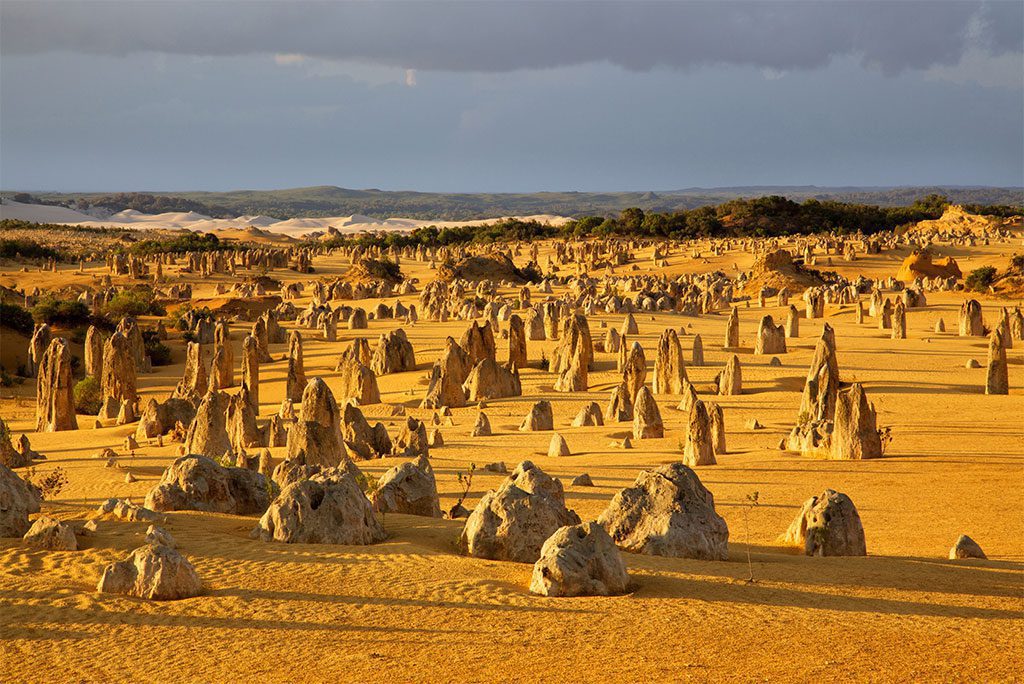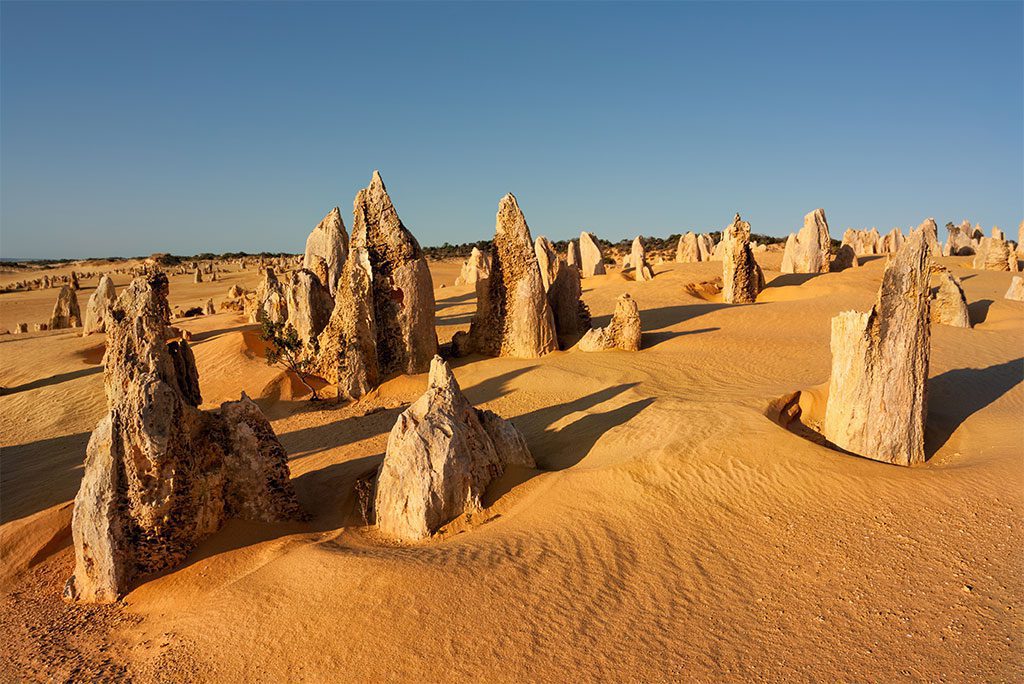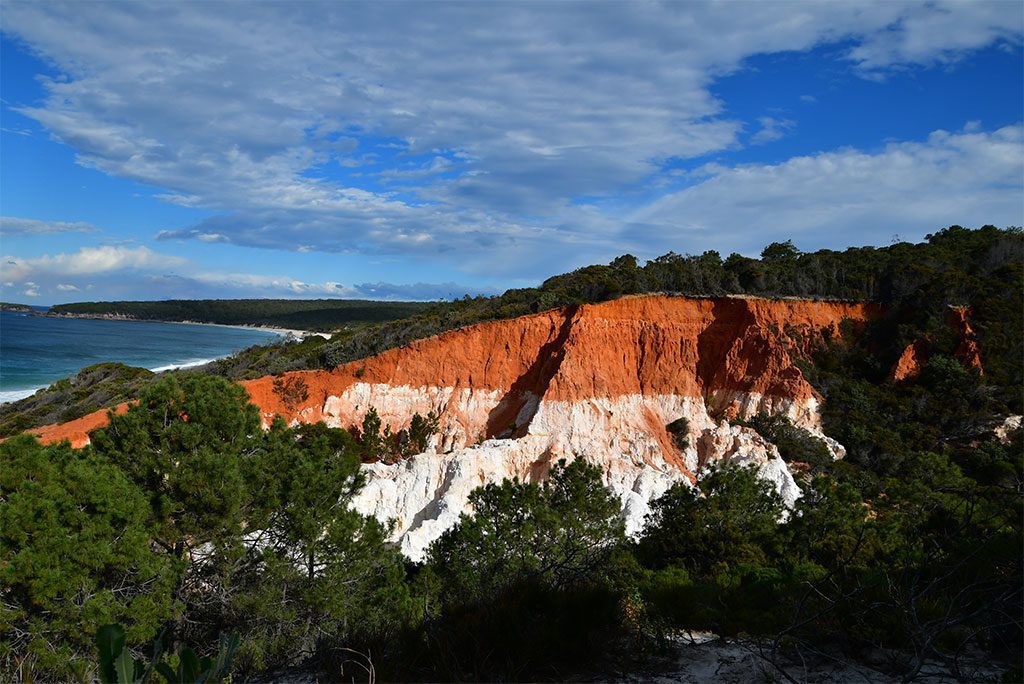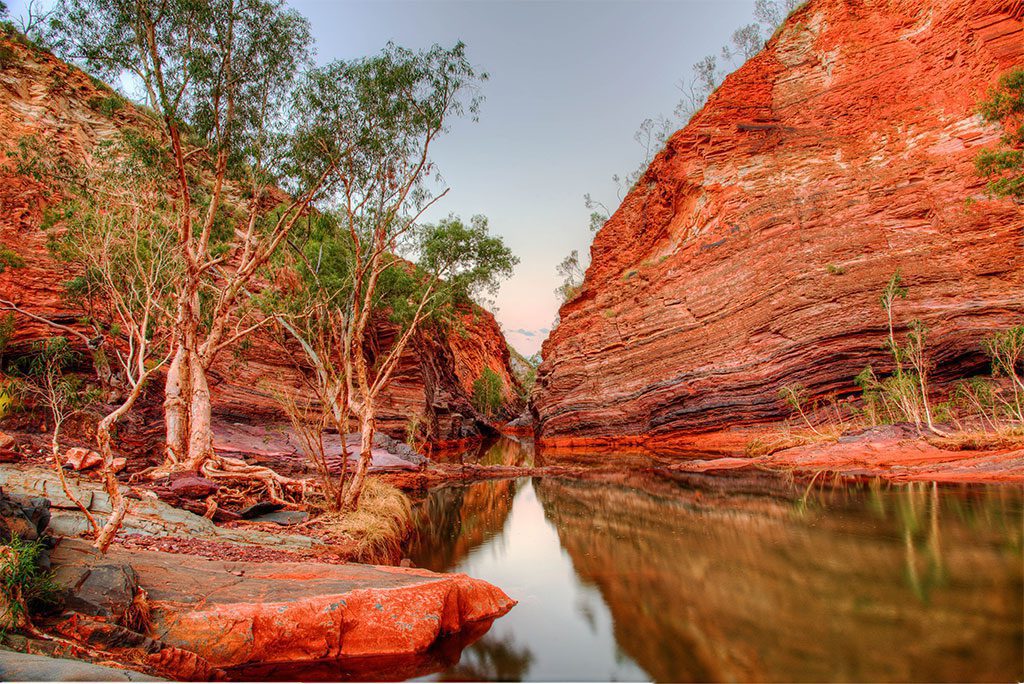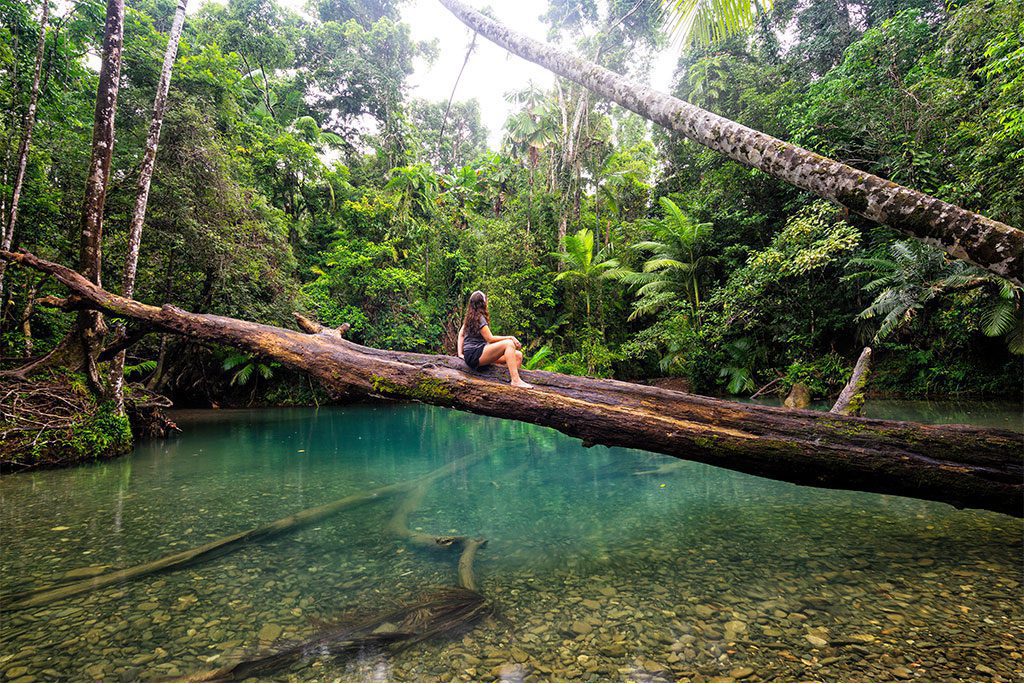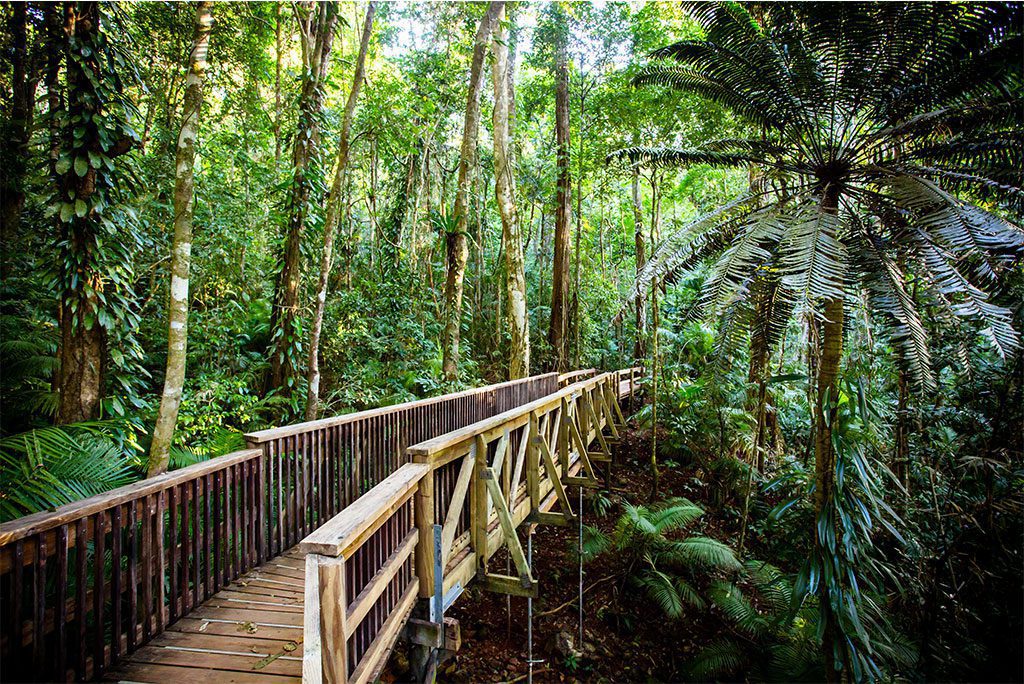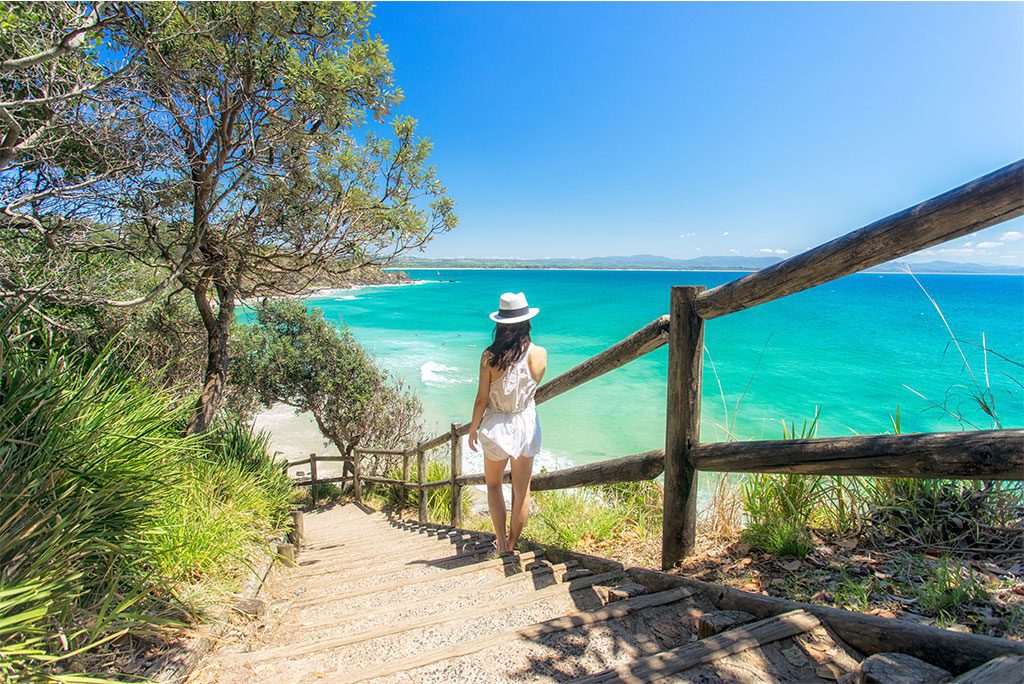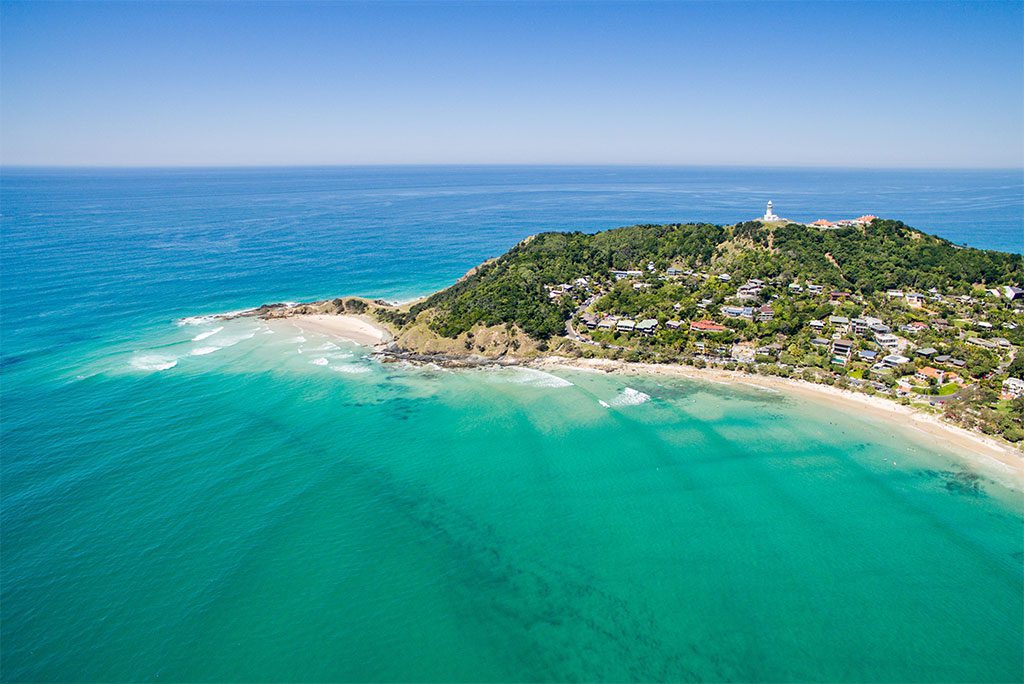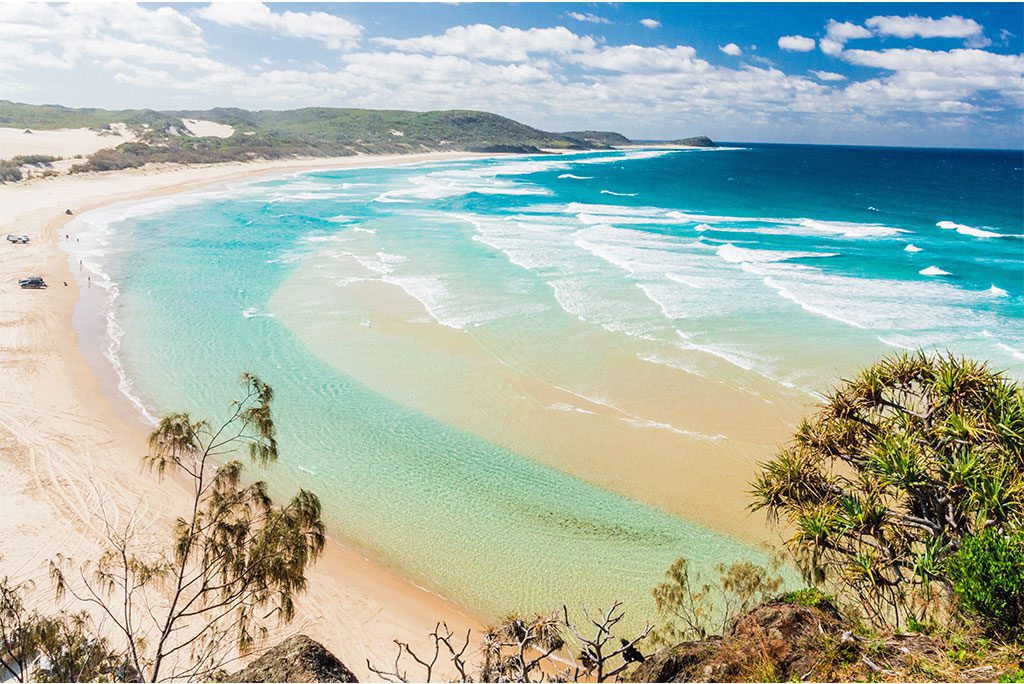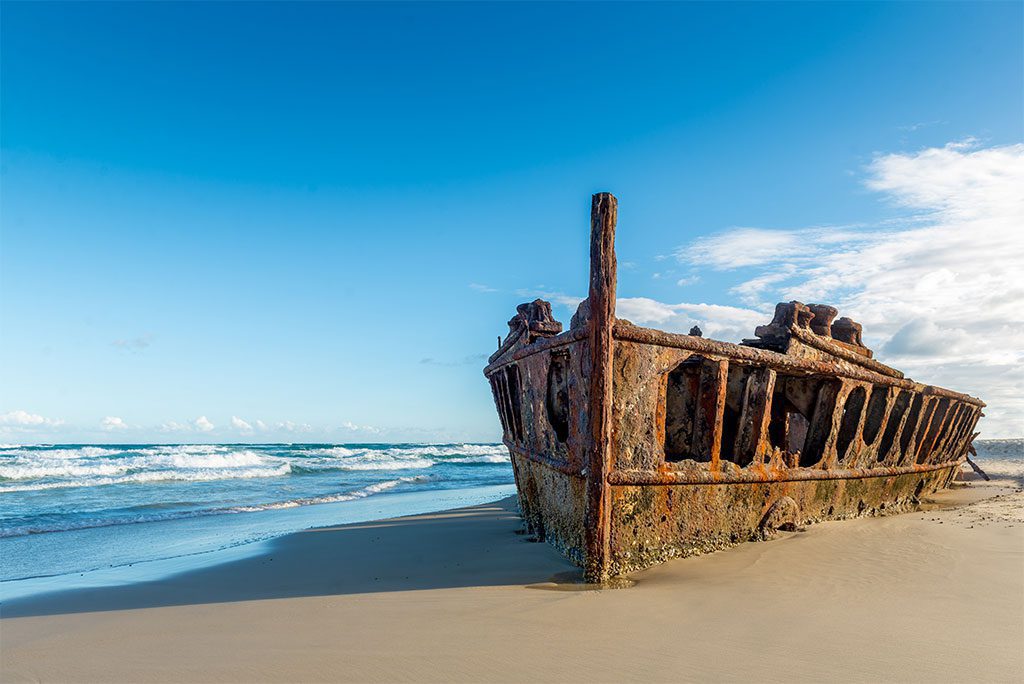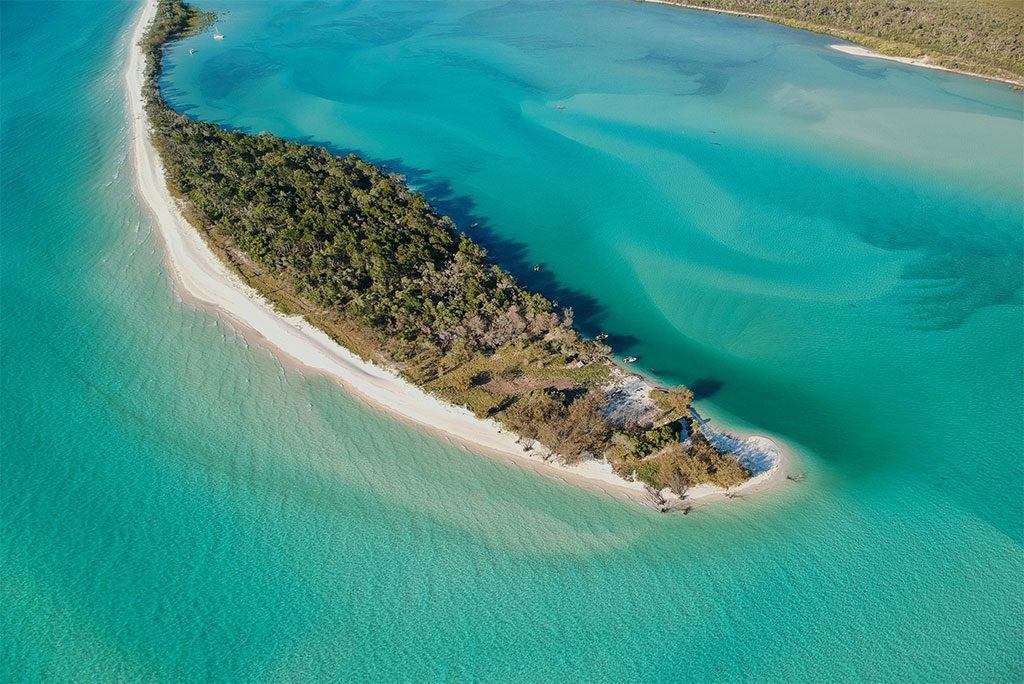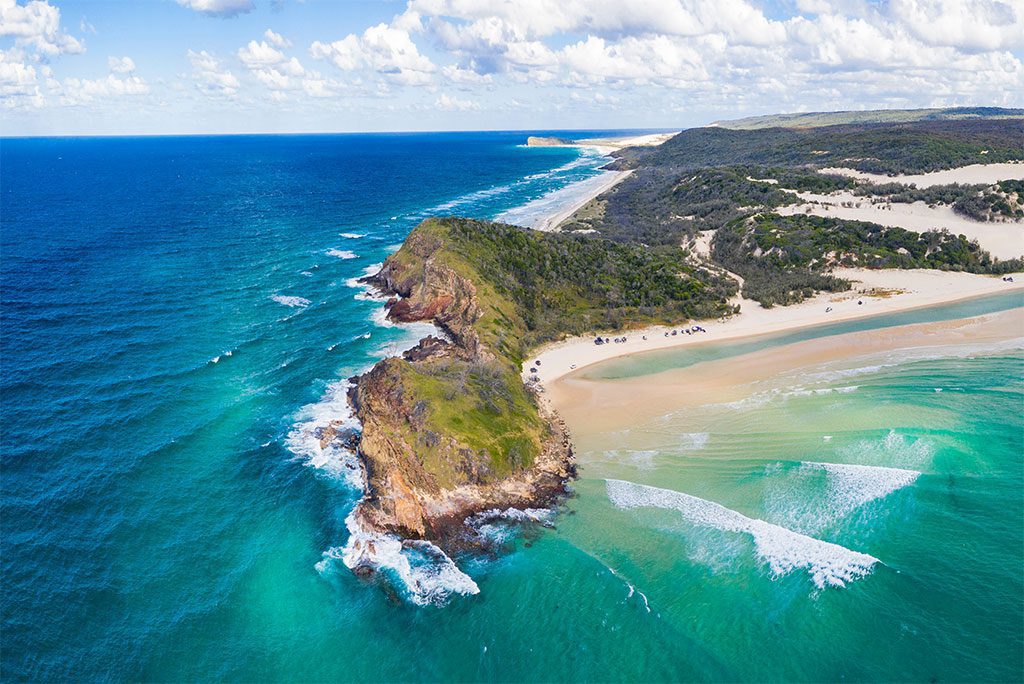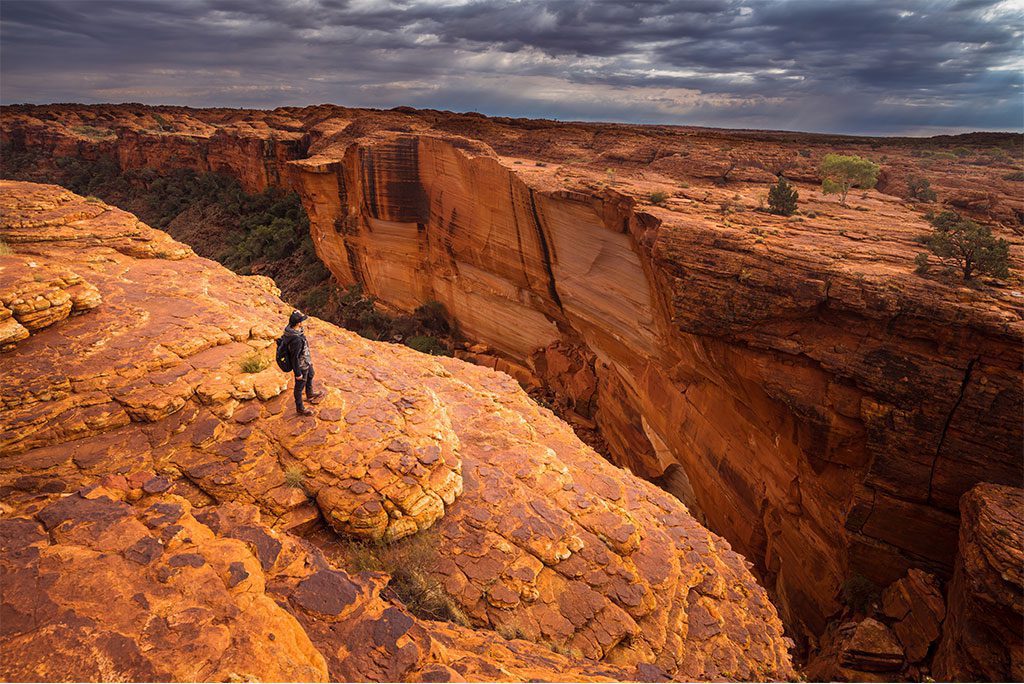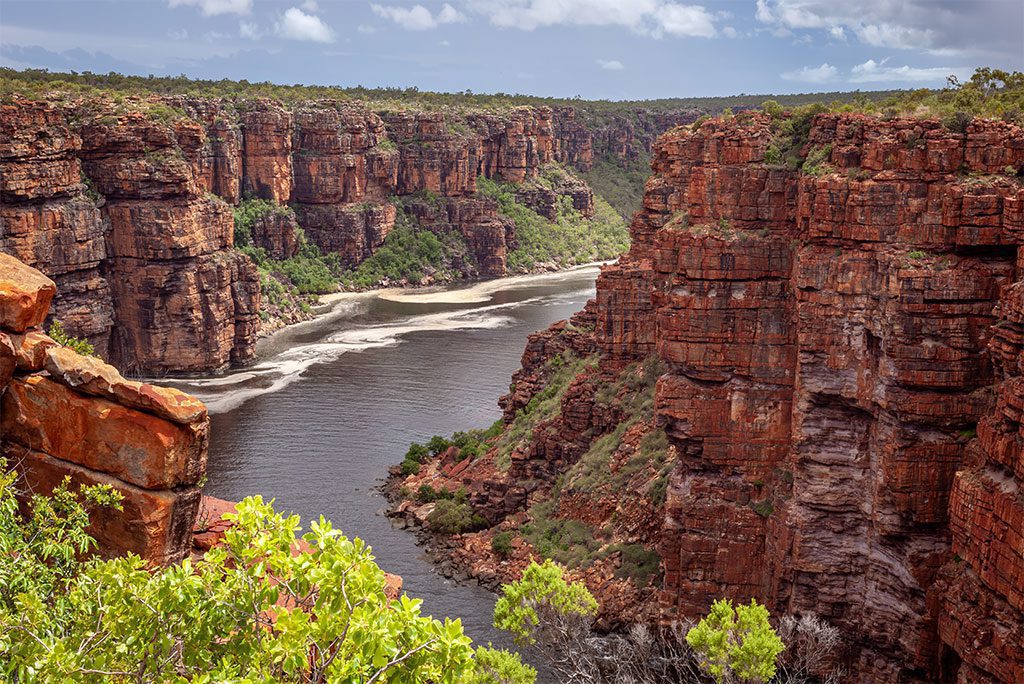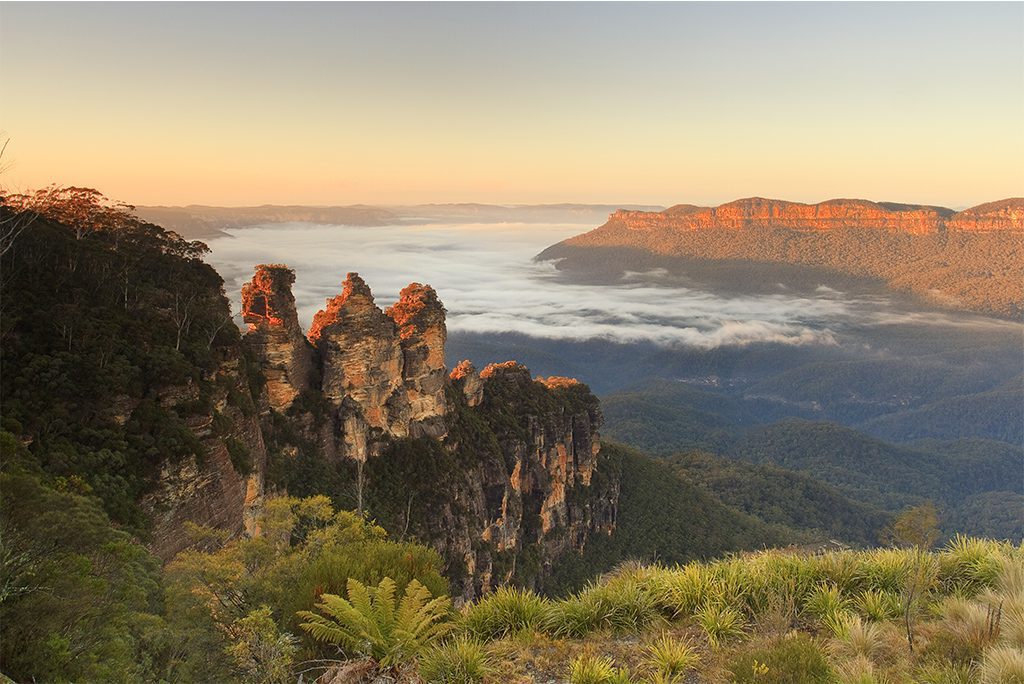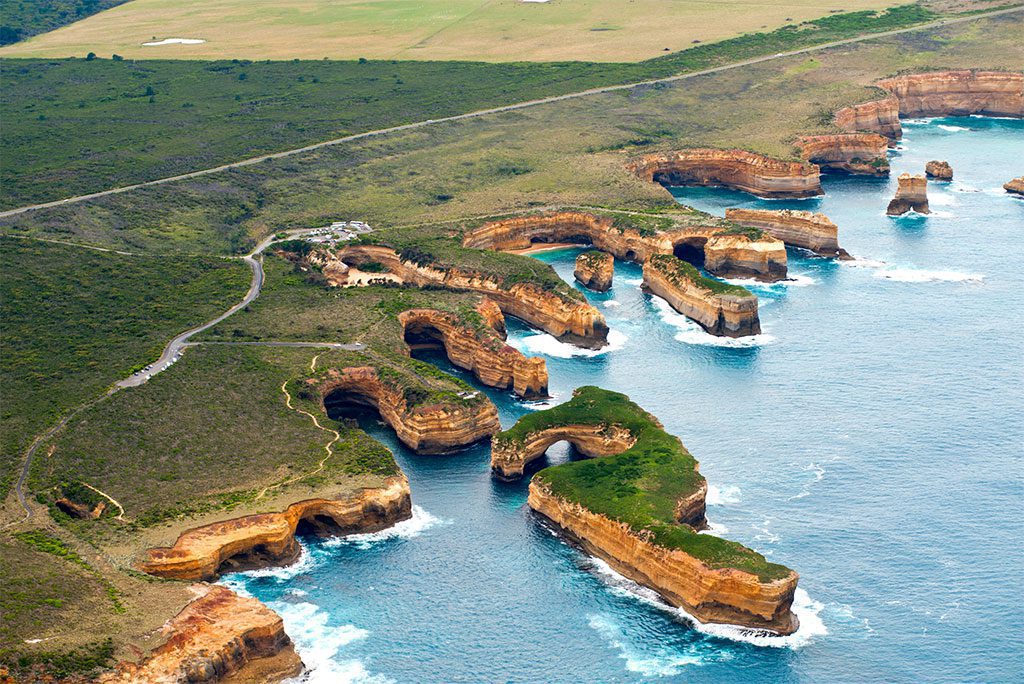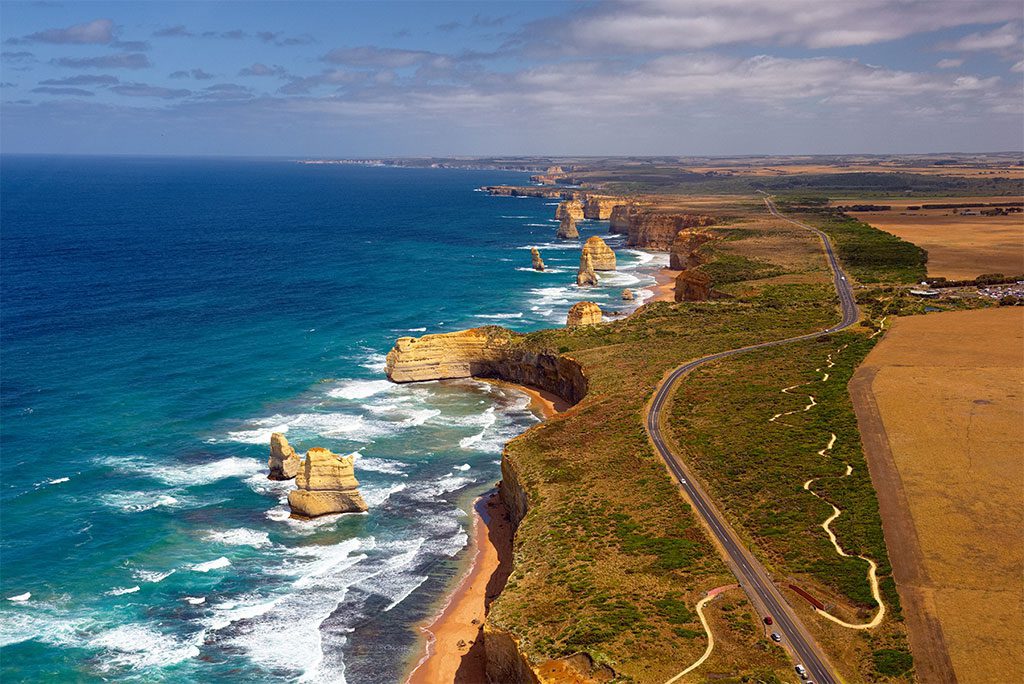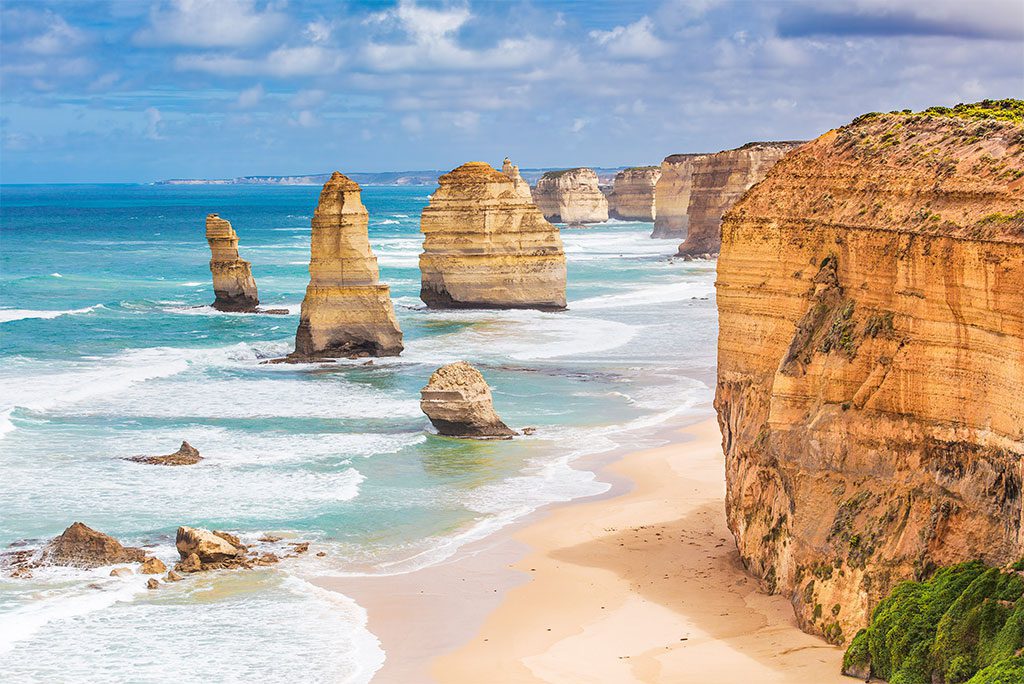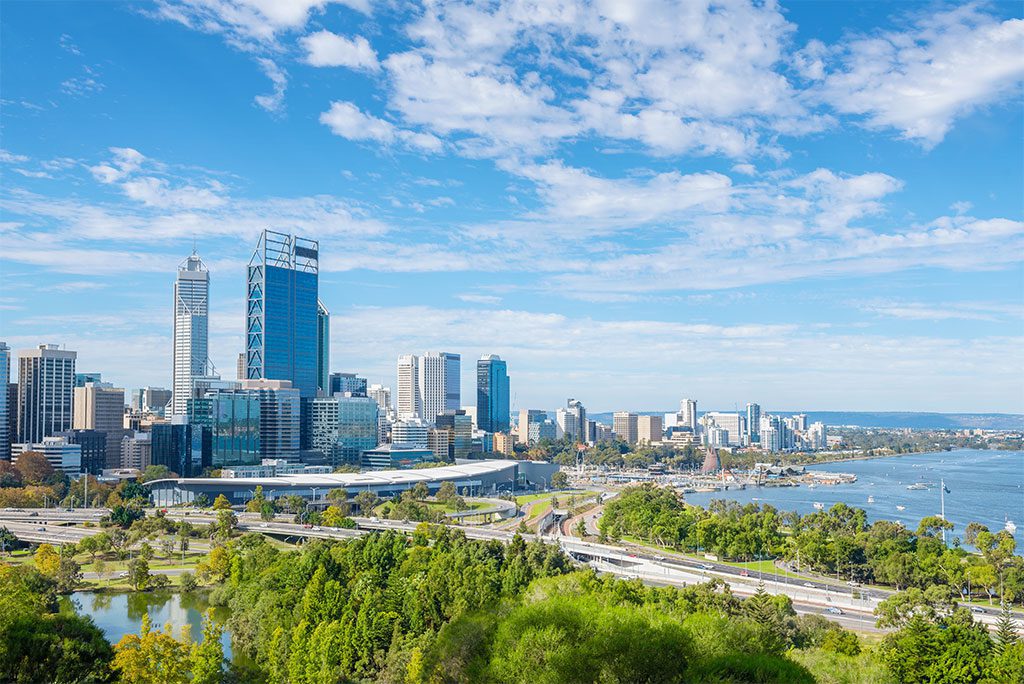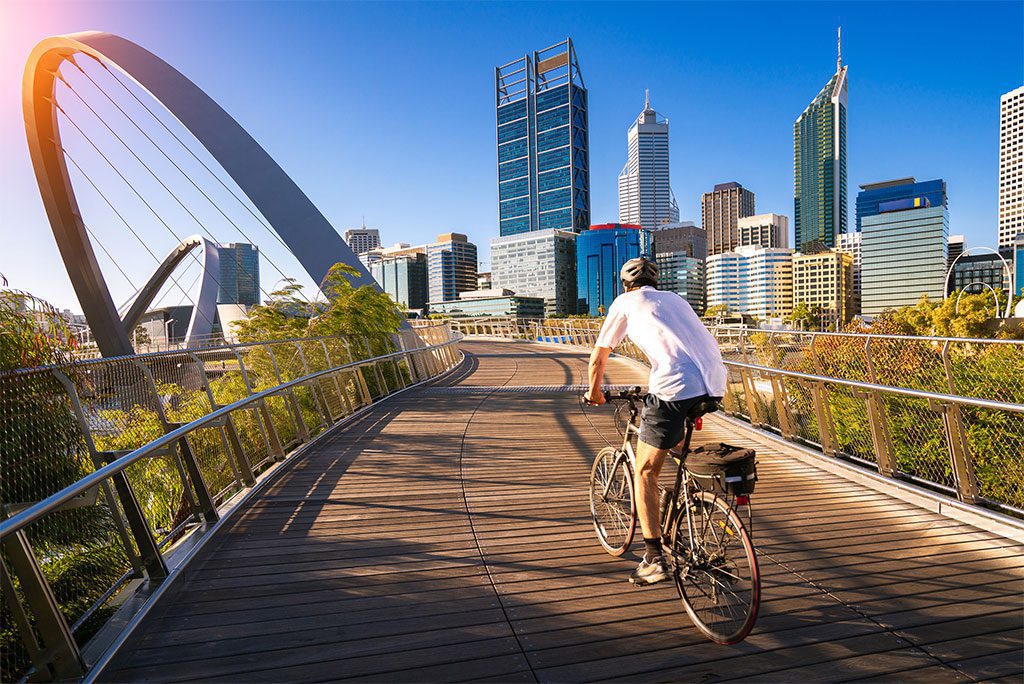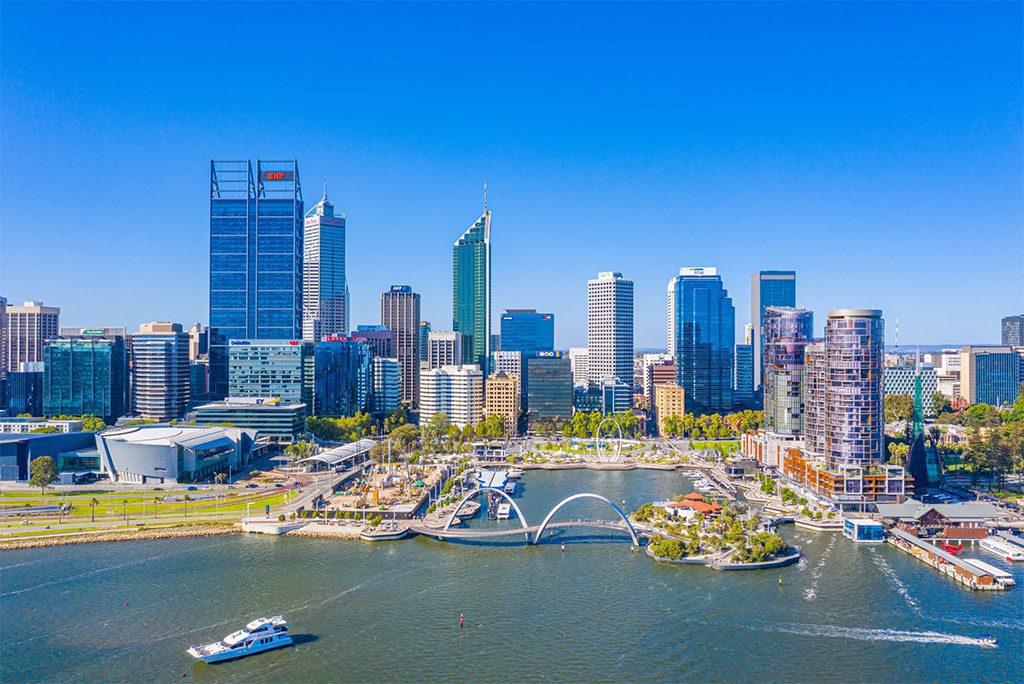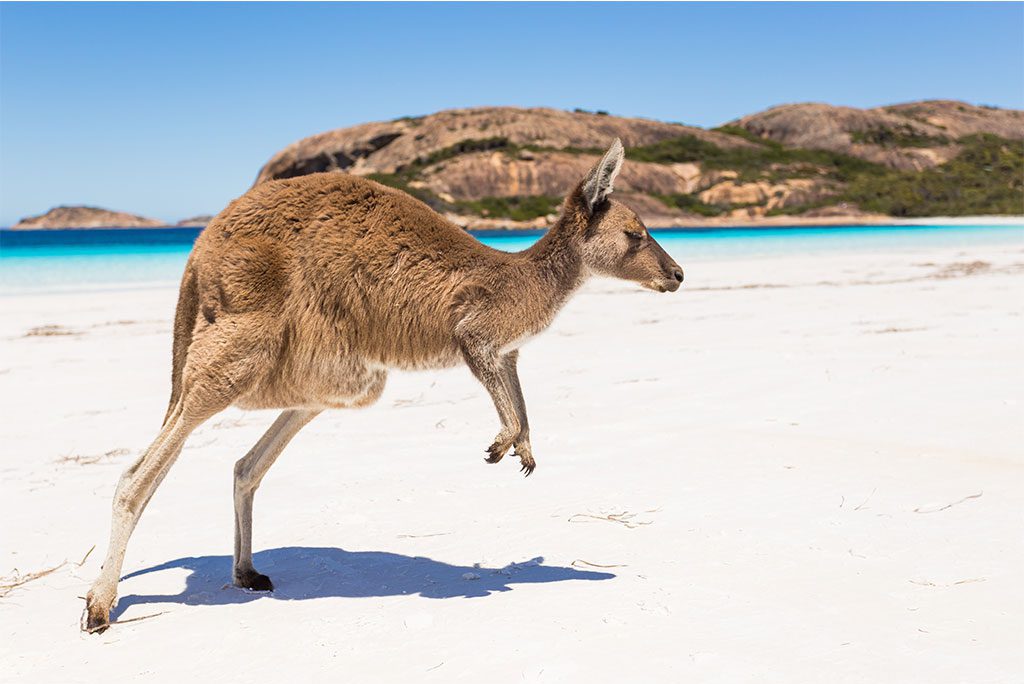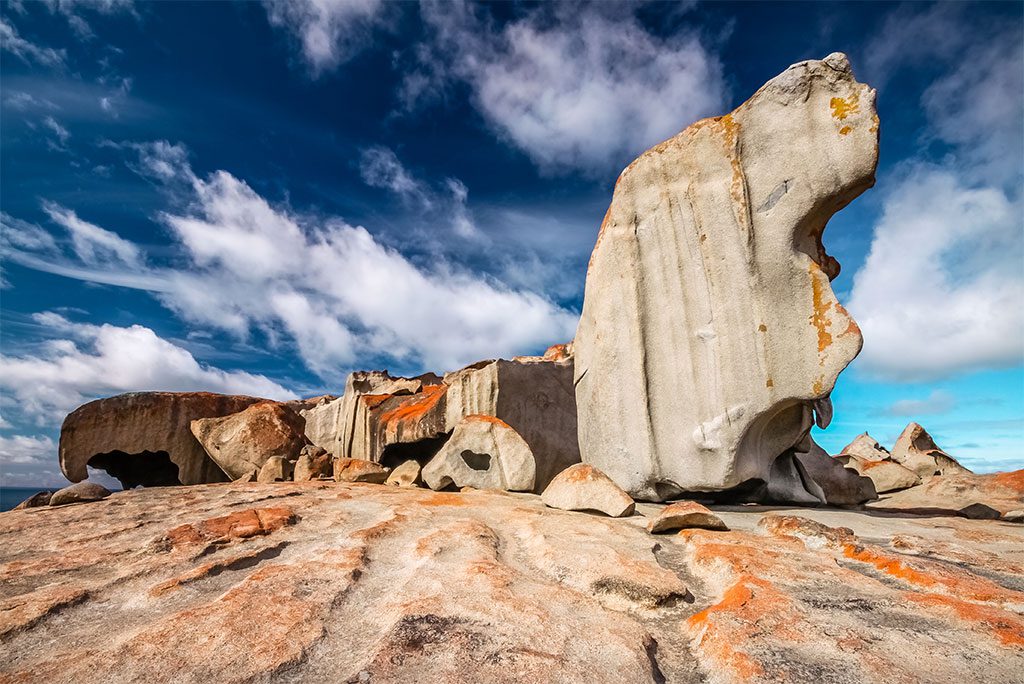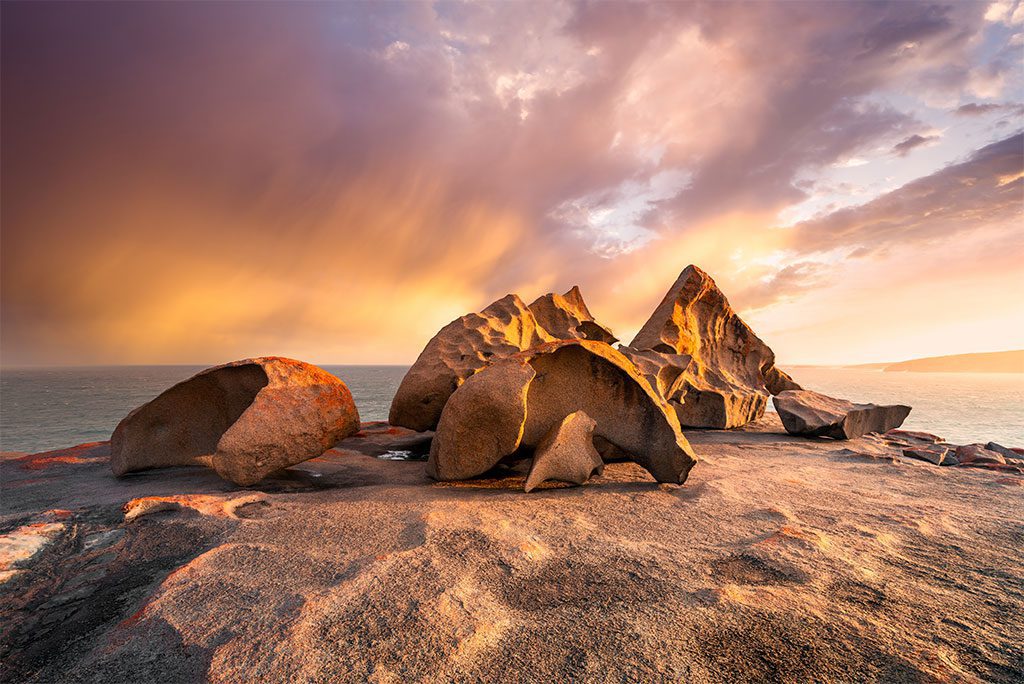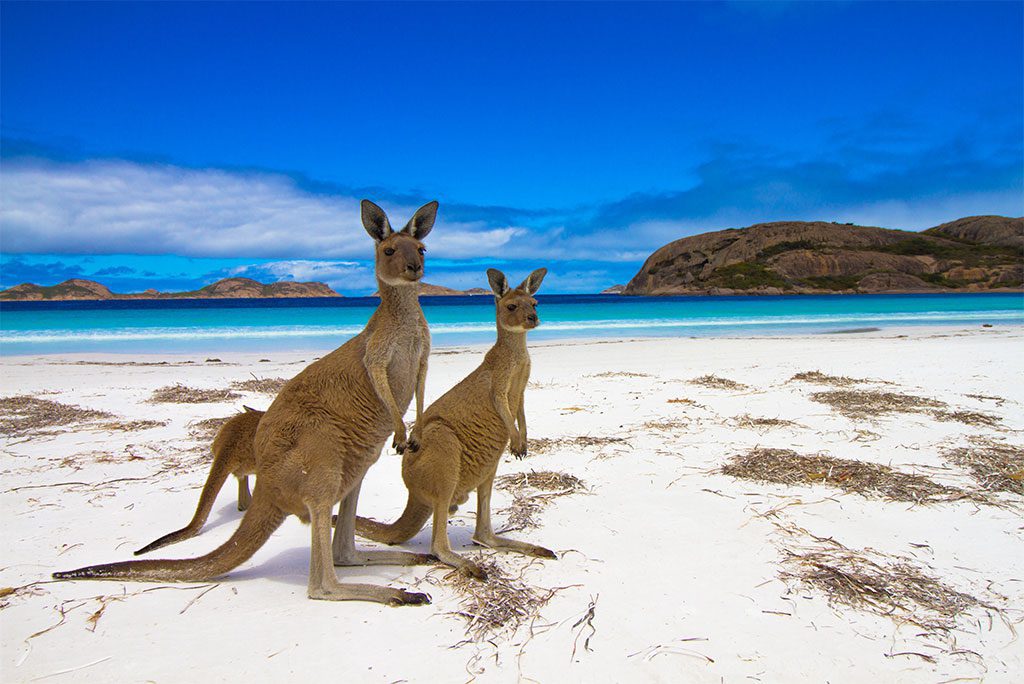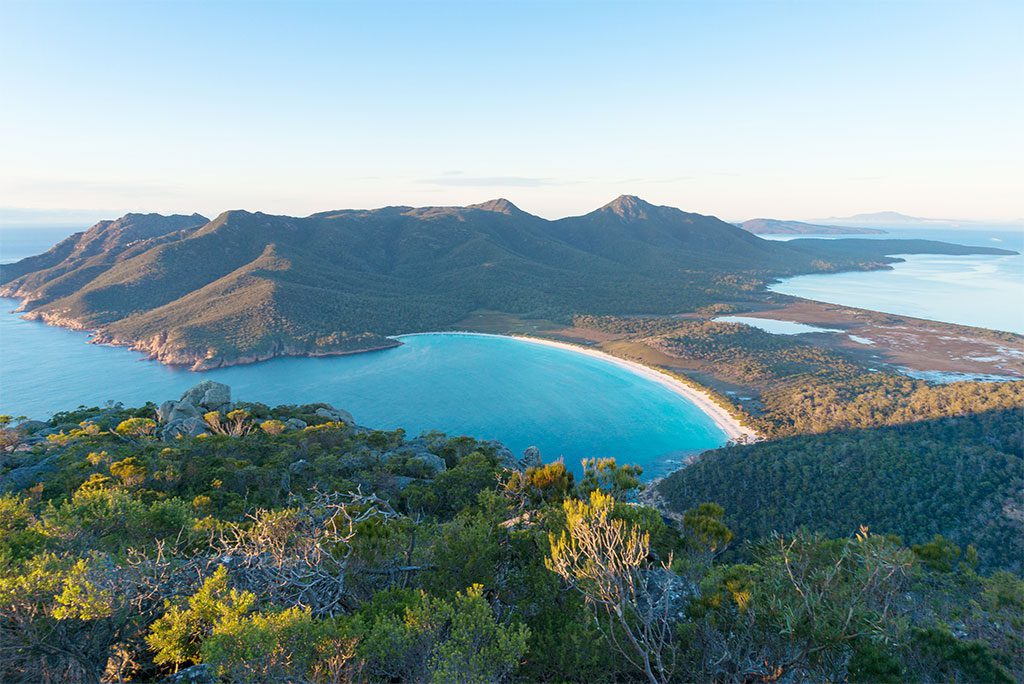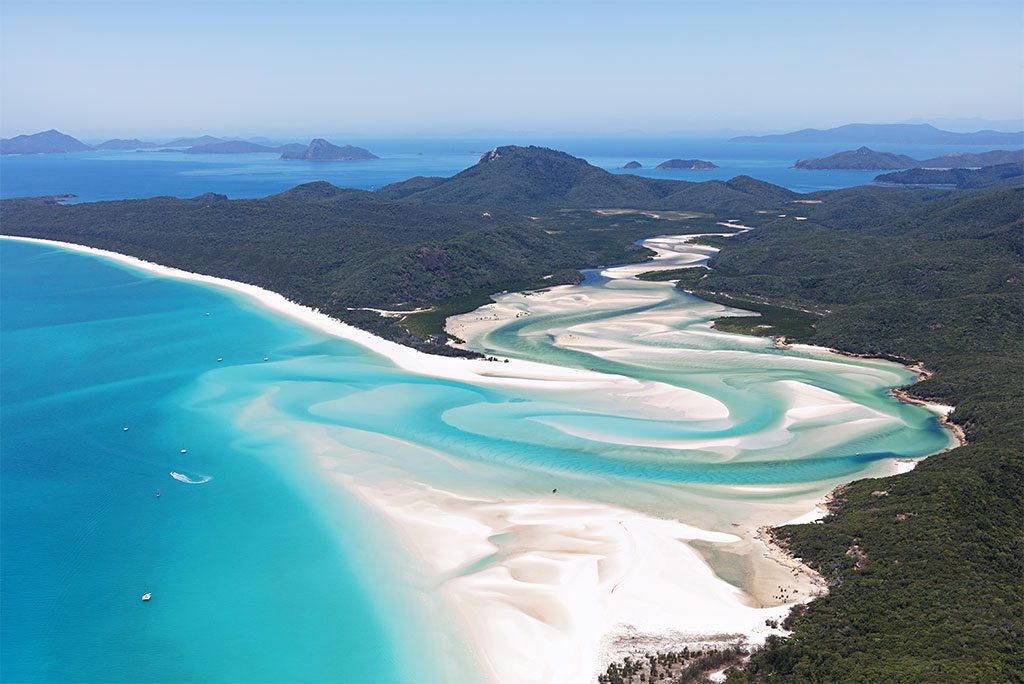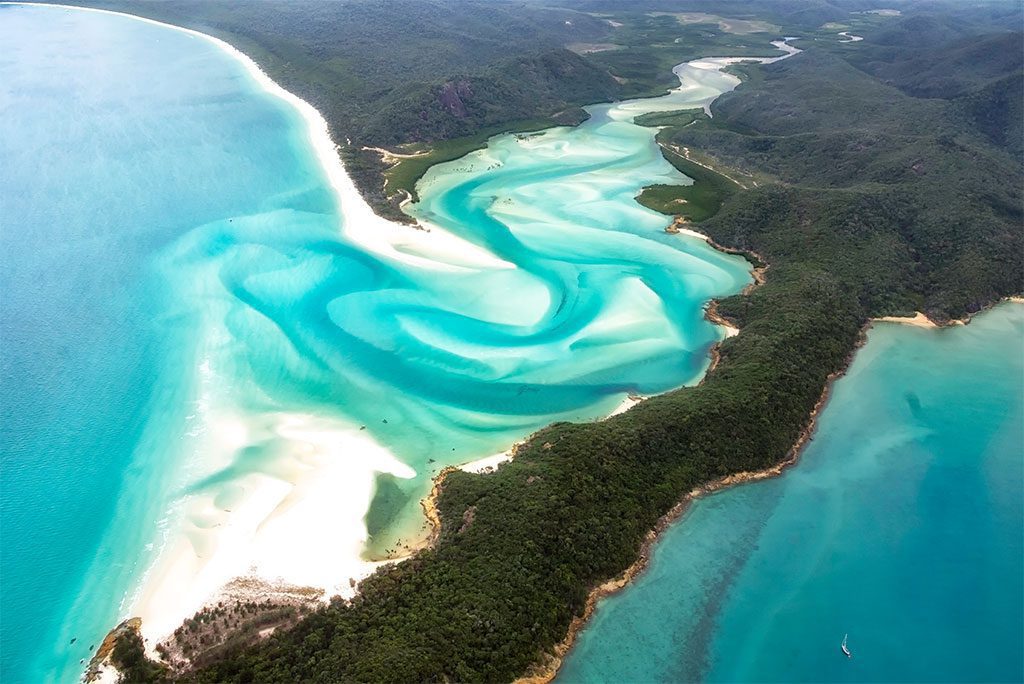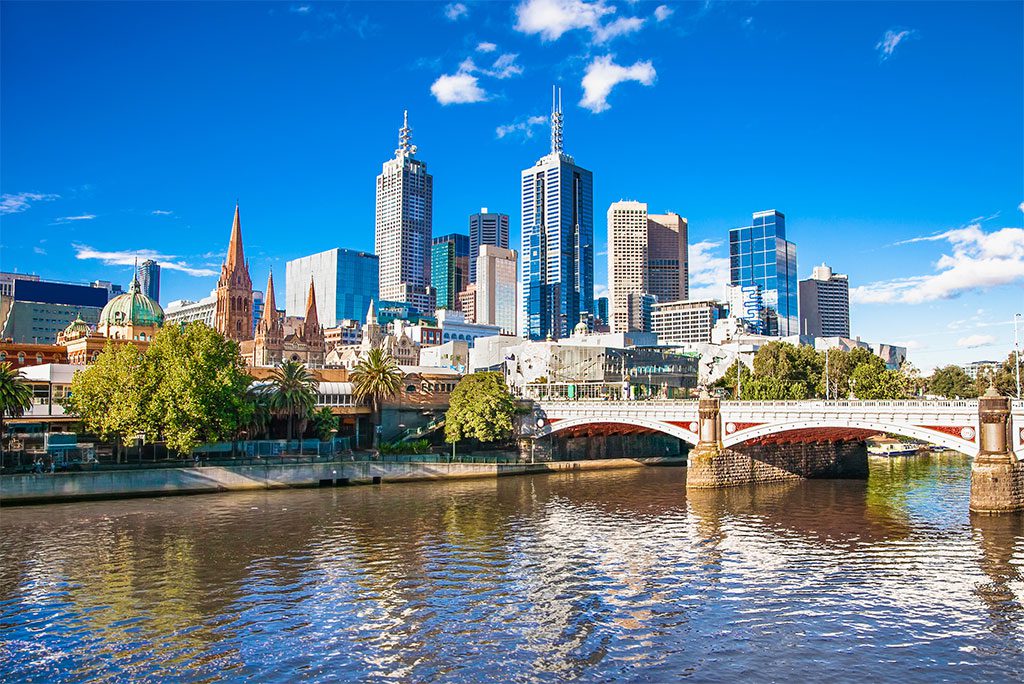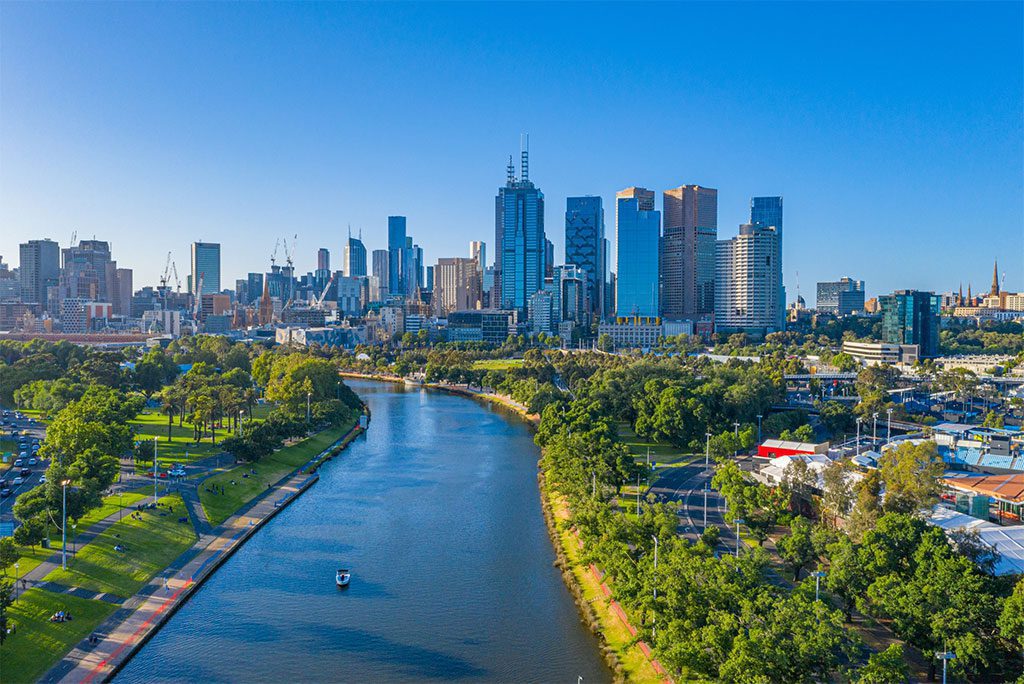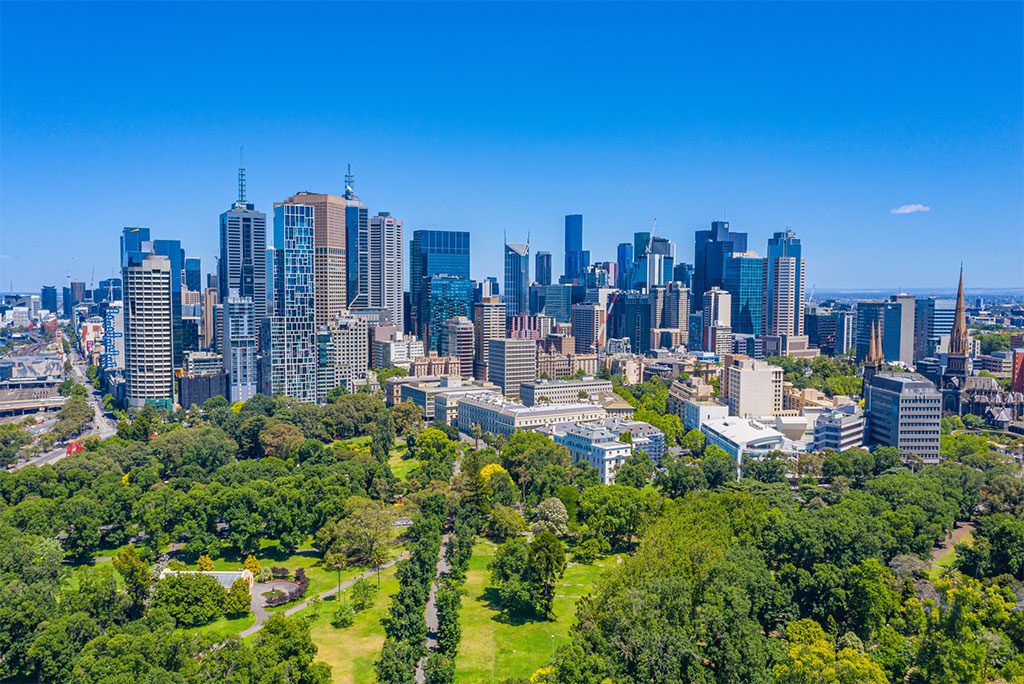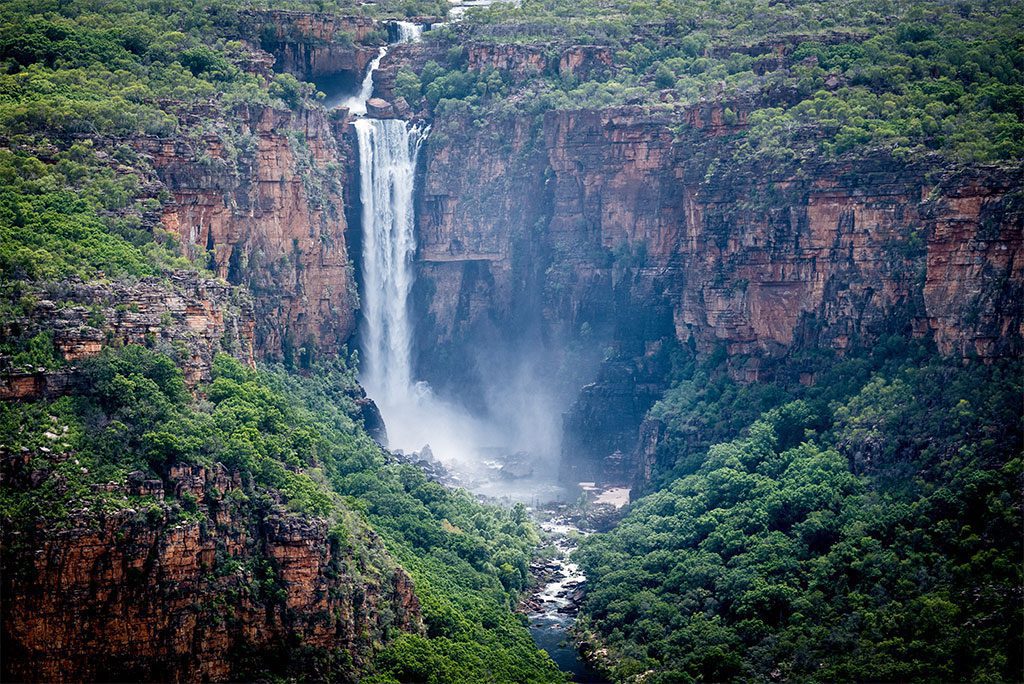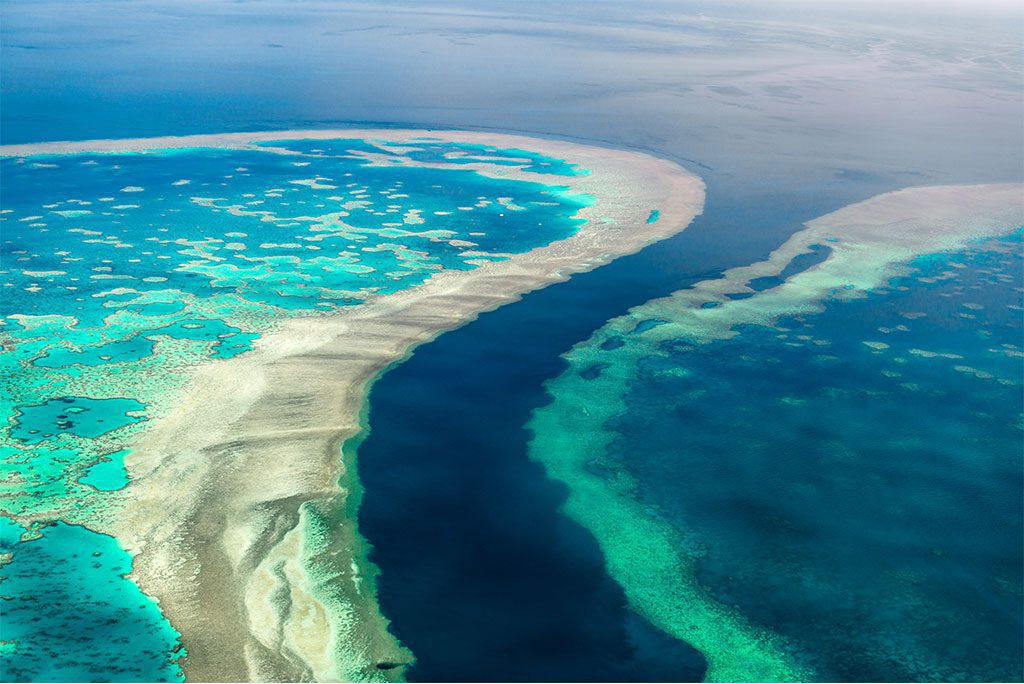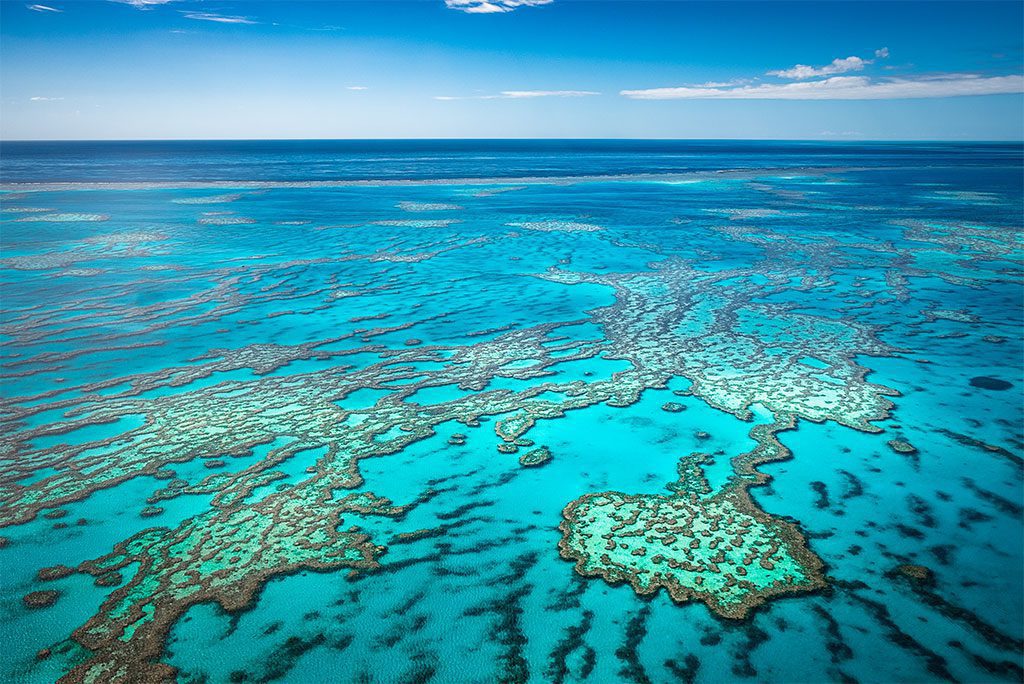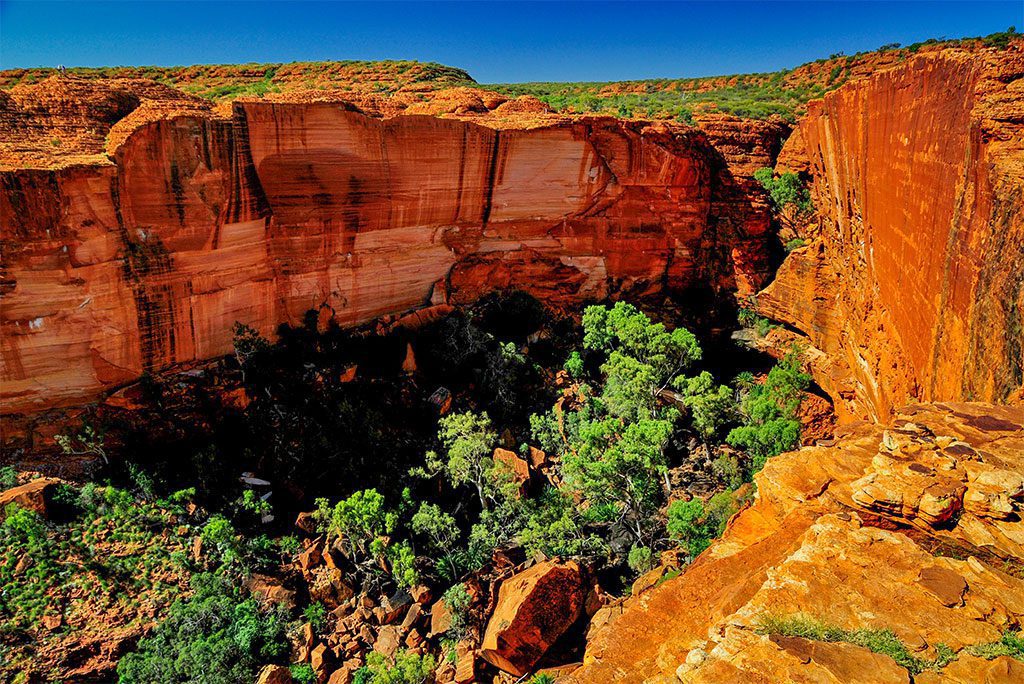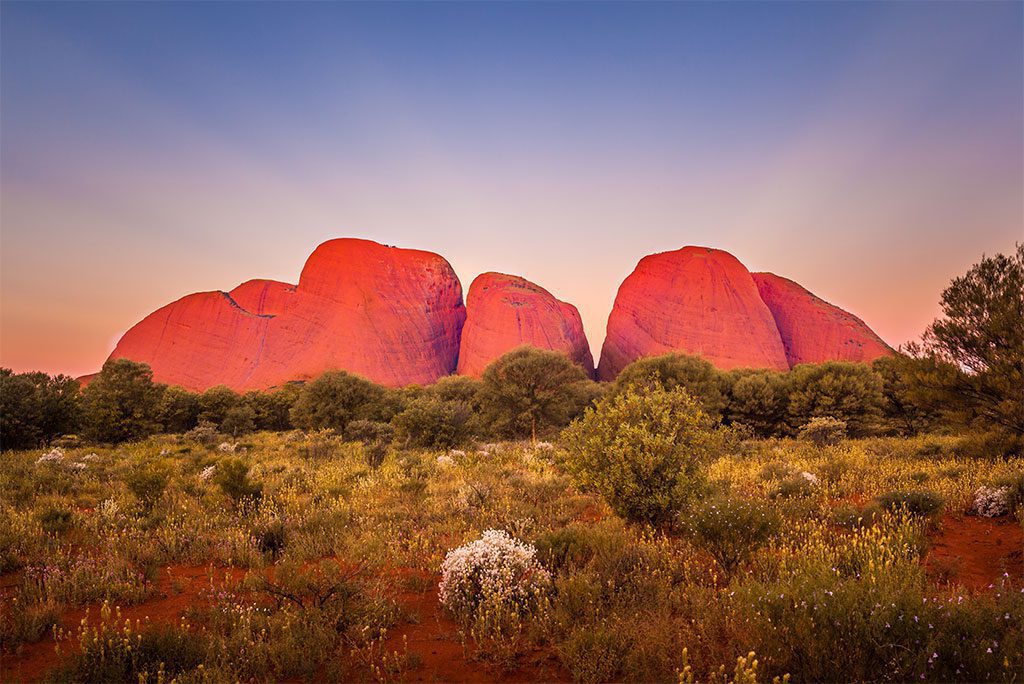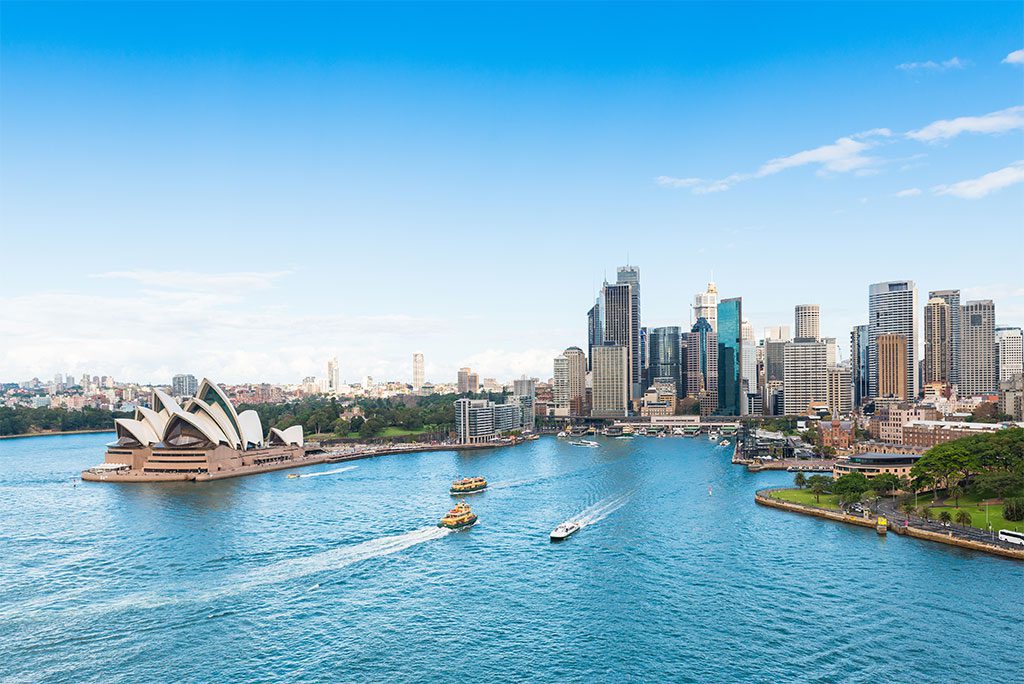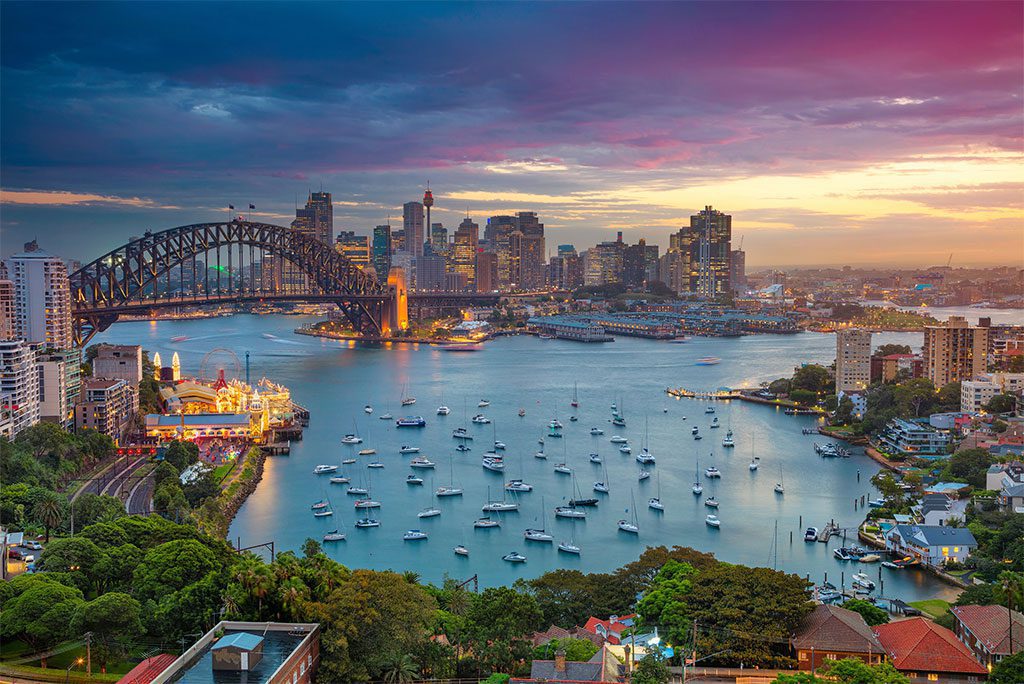Australia is both the biggest island and smallest continent on Earth, located between the Pacific and Indian oceans. There’s plenty of freedom to roam in Australia, and there are many interesting places to see, so you have every reason to set off on a walkabout. It’s clear that Australia has something unique to offer any kind of traveller, whether they’re interested in learning about the culture of the indigenous Aborigines, lounging on a beach, or partying in the heart of the metropolis.
Tasmania, Kakadu, and Uluru-Kata Tjuta National Parks are just a few of the incredible destinations available to tourists in Australia, thanks to the country’s extensive network of national parks and its many wonderful islands.
The Great Barrier Reef, a natural wonder and one of Australia’s most visited attractions may be found in the azure seas and pristine beaches that fringe its coasts. You’ll have your hands full attempting to cram all the amazing attractions and activities into your itinerary.
25. Canberra
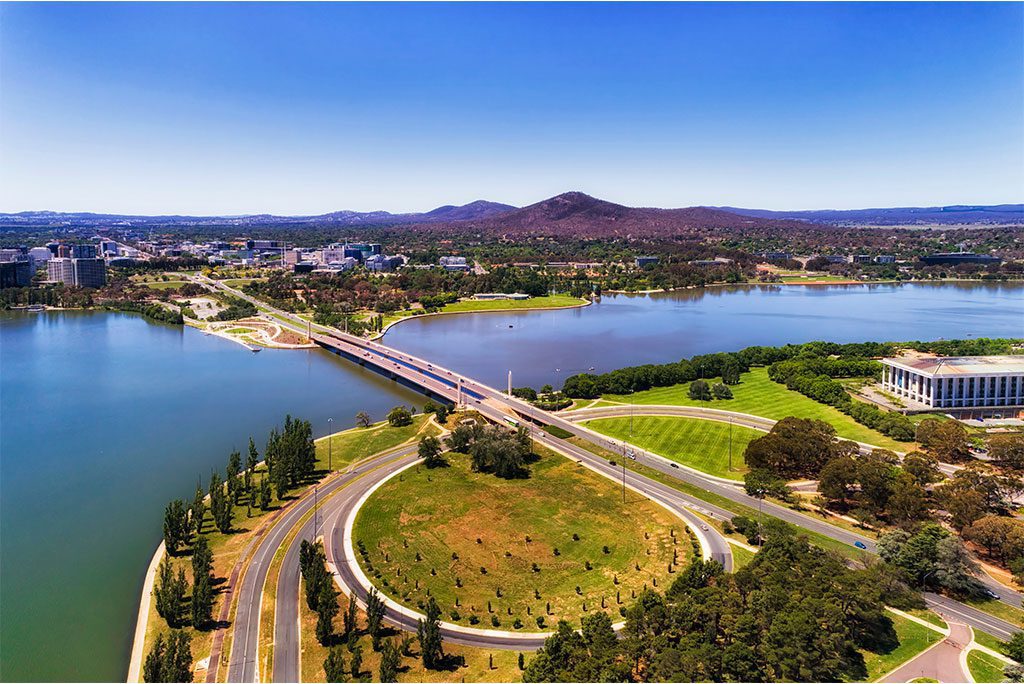
Canberra, Australia’s capital, was originally envisioned as a planned city in 1913 and has since developed into a vibrant and beautiful metropolis. Located in the northern part of the Australian Capital Territory, the city is sometimes jokingly referred to as “the bush capital” due to its proximity to a number of beautiful nature reserves and low-lying mountain ranges.
The city that was once reserved for politicians and government workers is now a bustling metropolis with renowned cultural institutions. It has a vibrant nightlife thanks to its many restaurants, pubs, and stores, as well as its significant student population. Despite its relative youth, the city is home to numerous fascinating historical sites, many of which are connected to the city’s parliament and other governmental organisations.
The city’s rural location makes it an excellent base from which to explore the surrounding countryside. Canberra has several parks, gardens, and man-made lakes that are great for outdoor recreation, as are the neighbouring natural reserves.
24. The Pinnacles
The Pinnacles may be seen in Nambung National Park, which is located in Western Australia not far from the town of Cervantes. The remarkable limestone structures were relatively unknown until a reserve was established in 1967 to safeguard the striking pillars from destruction.
The Pinnacles are a stunning formation of thousands of aged tombstones that rise steeply from the desert floor. Sand from the coastal dunes is continually being blown across the strangely appearing environment, creating a really stunning spectacle.
The unique designs of these structures have been the subject of much controversy, although it is widely accepted that they are constructed from limestone derived from seashells, since this area was submerged for millennia. A lot of people visit The Pinnacles now since it’s a great sight to see. Between them, you could also see an emu, a dingo, or a honey possum, and perhaps even a western grey kangaroo.
23. Gold Coast
The glistening Gold Coast is located on the southeastern coast of Queensland, to the south of Brisbane, and is known for its year-round balmy temperatures and clear blue skies. As a result of its proximity to the water, beautiful weather, and appealing sun, sea, and surf, this city is one of the most sought-after vacation spots in the country.
Most tourists visit Surfers Paradise. Large retail centres and pulsating nightclubs may be found in “the capital of the Gold Coast,” as can a wide variety of dining and lodging choices. Overlooking the wide beach, perfect for sunbathing, swimming, and watersports, are glittering high-rises.
Despite its reputation as a garish tourist trap, the Gold Coast is home to some amazing natural features, including gorgeous beaches and breathtaking sunsets. There are world-class surf breaks, and the area is home to thrilling theme parks, water parks, and natural preserves.
22. Alice Springs
Alice Springs is located in the Northern Territory’s vast desert, almost at the geographic centre of Australia and over 1,500 kilometres from the closest major city. Although it may be difficult to get to, the small village in the middle of nowhere is in a prime location from which to explore Australia’s Red Centre.
Alice Springs is an excellent destination to explore the rich history, tradition, and culture of the indigenous Australians, despite the town’s lack of attractions. Besides having a sizable Aboriginal community, it is also home to a number of world-class museums and galleries showcasing indigenous Australian art. In addition, there is a wide variety of hotels, taverns, and restaurants available to the public.
The stunning desert scenery, rock formations, and gorges in the area are the primary draws, however. The renowned Uluru, with its distinctly crimson colour and monstrously enormous landmass, draws the most people. However, the Kata Tjuta rock formations and the gaping chasms of Kings Canyon also provide breathtaking sights.
21. Karijini National Park
Karijini National Park, the state’s second-largest, can be found roughly a thousand kilometres north of Perth. It is mountainous, with the Hamersley Ranges serving as its focal point; its gorges, slot canyons, and waterfalls are among the best in the world.
Western Australia is home to three of Australia’s tallest peaks, which stand out against the region’s deep crimson terrain. They, together with the winding canyons and cliff faces underneath them, provide for spectacular trekking. Its semiarid landscape is broken up by oases, rivers, and waterfalls that are very delightful to swim in or bathe in after a long day of hiking.
More than 800 plant types and a wide variety of amazing animals call Karijini National Park home. The nature reserve is home to a variety of kangaroos, including red kangaroos, wallabies, and echidnas.
20. Darwin
Darwin, which is located on the coast of Australia’s Top End (which also includes the Northern Territory), has always been the most globally-minded of the country’s main towns. Because of its strategic location on the Indian Ocean, the city has always been an important trade centre. Darwin, while severely damaged during World War II and again in 1974 by Cyclone Tracy, is a town with an indomitable character. The city, with a population of around 75,000, has become a popular tourist destination in recent years.
The long stretch of sandy beach that is Darwin’s primary tourist draw is dotted with international brands and beachside bars serving beer and seafood. With an area that’s twice as big as Sydney Harbor, it’s no surprise that Darwin Harbor is a popular tourist destination.
The mangrove forest may be explored on cruises that run anything from two to twelve hours. Evenings see residents and tourists alike ambling through the city’s esplanade on their way to the Deckchair Cinema, a massive open-air cinema perched on the harbor’s edge.
All Kakadu, Litchfield, and Katherine Gorge trips originate in Darwin. Tropical Darwin has it all. Crocodiles in Crocodylus Park, a cruise to the Tiwi Islands (which are held by the Aboriginal people), or a day at the beach: tropical Darwin has it all.
19. Daintree Rainforest
Daintree National Park, located on Australia’s northeast coast, is home to one of the oldest and most biodiverse tropical rainforests on Earth. The state of Queensland is home to a wide variety of animals and is known for its spectacular flora and fauna as well as its ancient ecosystems.
In addition to its gorgeous rainforest, Daintree also has craggy mountains, rushing rivers, thriving coral reefs, and stunning beaches. Cape Tribulation is home to some of Australia’s most coveted white sand beaches.
The Daintree Rainforest is an outdoor enthusiast’s paradise and is easily reached from Cairns after a three-hour journey. Paddleboarding, ziplining under the canopy, and river cruises are all popular activities among visitors, in addition to wandering through the jungle and seeing birds and other animals.
18. Byron Bay
Located in New South Wales, a short distance from the Pacific Highway that links Brisbane and Sydney, is Byron Bay, the easternmost point of Australia’s continent. The gorgeous coastal resort is one of the most visited cities in the country due to its stunning scenery, excellent surfing, and easygoing locals.
Visitors come for the beautiful scenery and plenty of outdoor activities, but the town itself organises a variety of arts and cultural events throughout the year and a weekly farmers’ market. Skydiving, surfing, and whale-watching may all be done offshore, while yoga and scuba diving are also popular.
Byron Bay’s alternative culture and natural beauty have attracted a wide range of individuals, from retired hippies and artists to surfers, businesspeople, and families. This has resulted in the proliferation of hip cafes, restaurants, and bars, as well as art galleries, boutique hotels, and other forms of lodging.
17. Fraser Island
Fraser Island is a large island off the southeast coast of Queensland, Australia, separated from the mainland by the Great Sandy Strait. With a length of more than a hundred kilometres, the biggest sand island in the world is a popular tourist destination because of its stunning landscape and remarkable natural attractions.
It has beautiful, white-sand beaches and crumbling sand cliffs along its coasts, as well as scattered rainforests, thick mangroves, and epic coastal dune systems. Lake Wabby and Lake MacKenzie are just two of more than a hundred glistening freshwater lakes that dot its picture-perfect surroundings.
Great Sandy National Park, where many species of birds and animals, including dingoes, dolphins, wallabies, and whales, make their homes, is where you’ll find the most of the area’s breathtaking beauty. Camping out under the stars is an unforgettable experience, and wildlife viewing is only one of many fun things to do on Fraser Island.
16. Broome
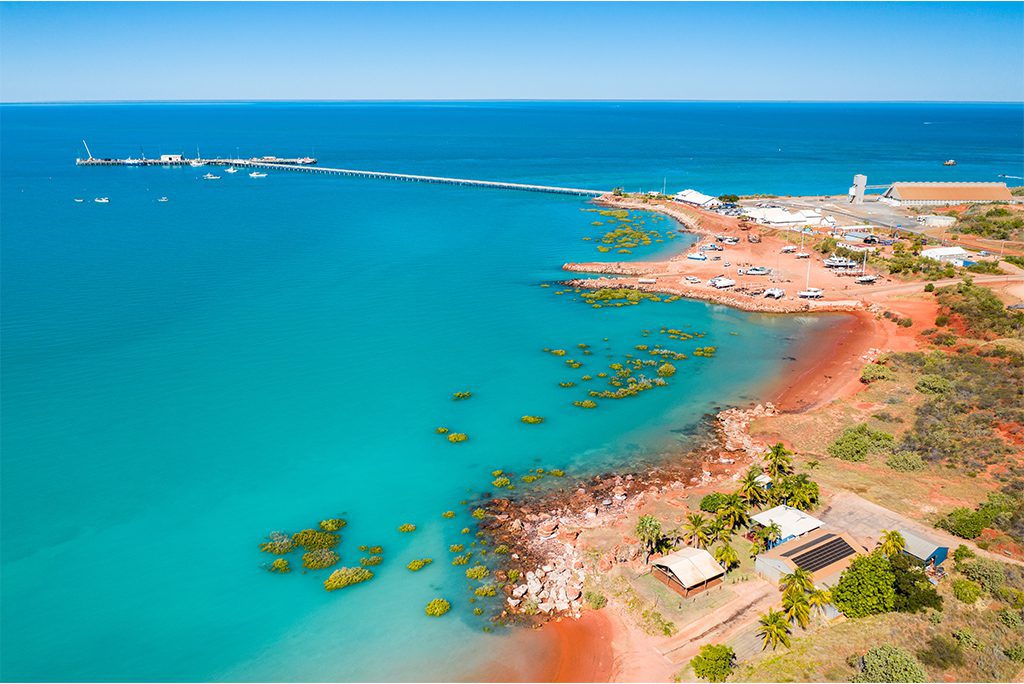
Northern Australia’s coast is home to the picturesque and remote town of Broome, which sits on a narrow peninsula that protrudes into the Indian Ocean. The secluded beach resort and pearling town serves as a gateway to the region’s wealth despite its location more than 2,000 kilometres from both Darwin and Perth, the two closest towns.
Cable Beach, generally considered one of the most beautiful beaches in Australia, is where the majority of Broome locals and visitors go to unwind and enjoy themselves. In addition to lounging on the white beaches and swimming in the turquoise seas, tourists may indulge in spa treatments, exotic drinks, and camel rides at sunset at the area’s plush resorts.
The surrounding attractions of Entrance Point’s incredible rock formations and Gantheaume Point’s crimson cliffs and dinosaur tracks are perfect for the more adventurous traveller. Horizontal Falls is farther out, and the Dampier Peninsula and the Kimberley Region also have their fair share of beautiful, undeveloped natural areas.
15. Cairns
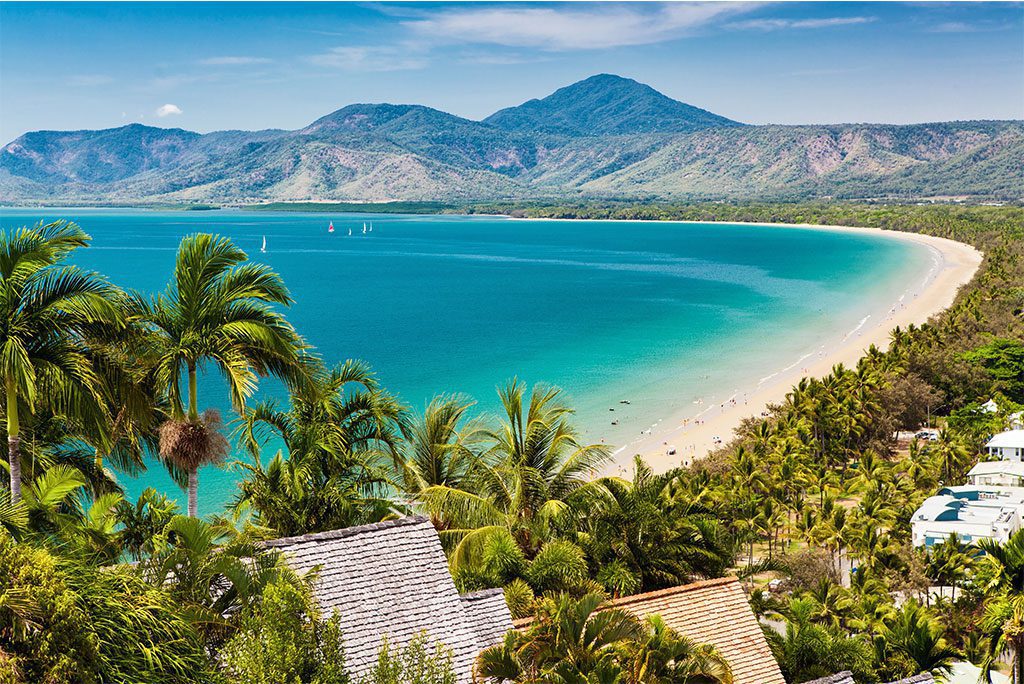
Cairns is a popular tourist destination in Australia because of its tropical environment, laid-back vibe, and proximity to the Great Barrier Reef. Cairns, a city of around 150,000 inhabitants in Australia’s far northwest, is a provincial yet elegant place to live.
Sugarcane plantations and tropical rainforest surround the city, which is situated between the Coral Sea and a range of mountains. Before exploring the beautiful surrounding environment, tourists may enjoy the many pubs, restaurants, and shops that are available.
Cairns does not have beaches, but rather a saltwater lagoon in the middle of the city. The Cairns Esplanade is a seaside strip filled with hip eateries, watering holes, and shops. Just to the north of the city are a number of beaches that can be reached by bus or vehicle in a matter of minutes. Plants that have been traditionally utilised by Aboriginal people are on display in the City Botanic Gardens. At the other end of the gardens, crocodiles may be seen lounging in the Centenary Lakes, reached by a boardwalk across the surrounding jungle.
Cairns is a fantastic base from which to explore the Great Barrier Reef by snorkelling or scuba diving, or to try out other extreme activities like skydiving or whitewater rafting. Many tourists will not want to miss a trip up an aerial walkway over the Daintree Rainforest to the north of Cairns, which is often regarded as the oldest tropical rainforest in the world.
14. Kings Canyon
Kings Canyon in Australia’s Northern Territory’s Watarrka National Park is awe-inspiring for its vastness and scope. The massive chasm, which is one of the area’s top tourist destinations, was carved out by erosion of the rusty-colored sandstone about 400 million years ago.
The massive canyon is a stark contrast to the surrounding barren desert landscapes, with walls that soar over a hundred metres in height and a little watercourse and scant flora at the bottom. Whether you’re taking a shady walk or an exhilarating hike along its edge, there are breathtaking views to take in and unique rock formations to examine.
Kings Canyon has always provided the Luritja people with fresh water and a cool location to escape the scorching desert heat. Even now, it is revered as a holy place. It is highly recommended that anybody planning on trekking or climbing in the canyon carry enough water with them due to the scorching temperatures and harsh weather.
13. Adelaide
Adelaide, the capital of South Australia, may be found on the eastern coast of the Gulf of St. Vincent. Adelaide is home to more than 1.2 million people, making it the fifth-largest city in Australia. Around 75% of South Australians call the Adelaide metropolitan region home.
Several of Australia’s most acclaimed wine regions surround the city, which sits on a plain between the undulating Adelaide Hills and the Gulf. From north to south, the Barossa Valley and Clare Valley, McLaren Vale and Langhorne Creek, and the Adelaide Hills, where it’s colder, may be found.
Adelaide, affectionately known as “the city of churches” for its several soaring spires, is a beautiful city with plenty of parks and green places for residents and tourists to enjoy.
The city’s diversified gourmet food and café culture is a result of its proximity to premium wine and food-producing areas and the influx of people from Europe and Asia. The Adelaide Festival and the Adelaide Fringe Festival, two of Adelaide’s annual creative celebrations, help to foster this city’s unique culture every March.
12. Blue Mountains
The Blue Mountains, in New South Wales, close to the west of Sydney, are one of Australia’s most easily accessible and breathtaking natural marvels. Magnificent mountains, plateaus, and escarpments spread over a large region provide for a beautiful day trip or weekend getaway.
The mountains get their evocative moniker from the ethereal haze produced by the oil of their seemingly endless eucalyptus trees. The areas of Echo Point and Govett’s Leap provide breathtaking panoramas, and the area is laced with miles of well-maintained hiking trails and mountain biking tracks.
The mountains are a fantastic location for studying Aboriginal culture and history since they have long been home to the Gundungurra and Darug peoples. There are also many picturesque towns and villages spread out over the region. One area, Springwood, is famous for its art galleries, while another, Leura, is home to quaint artisan stores and upscale eateries.
11. Great Ocean Road
The Great Ocean Road, which stretches for a total of 243 kilometres down Victoria’s southern coast, is widely regarded as one of the most beautiful drives anywhere in the world. The roadway, finished in 1932, was constructed by returning troops in honour of the war dead.
The route travels from the tourist hub of Torquay to the rural community of Allansford by way of some of the most impressive limestone sea stacks, hidden coves, and world-class surf breaks in the area. It sometimes passes through rainforest, lush wine country, and endless eucalyptus trees, interspersed with quaint beach villages.
Bell’s Beach, renowned for its world-class surfing, and Great Otway National Park, home to a wealth of breathtaking scenery, are two of the most visited destinations in the area. The Twelve Apostles are an impressive natural landmark, despite being regularly battered by the powerful Southern Ocean.
10. Perth
Perth, the capital of Western Australia, is a somewhat remote city compared to the rest of Australia, yet it is consistently ranked as one of the world’s most livable cities due to its casual atmosphere, excellent cultural attractions, and plenty of recreational opportunities.
Beaches line the northern Sunset Coast, and many of Perth’s parks, footpaths, and picnic sites run along or near the Swan River and other bodies of water. The port of Fremantle, often referred to as “Freo” by the locals, is a lively marina that has become popular with creative types and students in recent years. Located just north of Fremantle, Cottesloe Beach is Perth’s most frequented beach.
Kings Park, one of the biggest urban parks in the world, spans a whopping one thousand acres and includes the city-viewing peak of Mount Eliza, a botanical garden with elevated pathways, and the State War Memorial Park. Experience Australia’s native kangaroos and other creatures up close and personal at the Perth Zoo. It is possible to see the daily feedings of the flightless birds on either Rottnest Island, which is car-free, or the nearby Penguin Island, which is accessible by ferry from Perth.
Sun-and sea-loving Perth is home to a plethora of aquatic experiences, such as swimming with dolphins, barbecuing on the river’s edge, and visiting Australia’s biggest aquarium, the Aquarium of Western Australia.
9. Kangaroo Island
Kangaroo Island, the country’s third-largest island, is located about 45 minutes by boat from Cape Jarvis on the South Australian coast. Because of its pristine nature, the area is a popular tourist attraction in the state.
Its diverse natural areas are home to everything from enormous dunes and towering cliffs to massive caverns and fascinating rock formations. Inland, you can see echidnas, koalas, and kangaroos; offshore, you can see penguins, sea lions, and dolphins. Hiking, sandboarding, and scuba diving are just some of the popular recreational pursuits that make use of the region’s varied topography.
Kangaroo Island is a tourist hotspot for good reason: it’s teeming with unique flora and fauna, exciting outdoor activities, and exquisite local foods and wines. These may be tried in the island’s four major cities or at the many farms and vineyards.
8. Brisbane
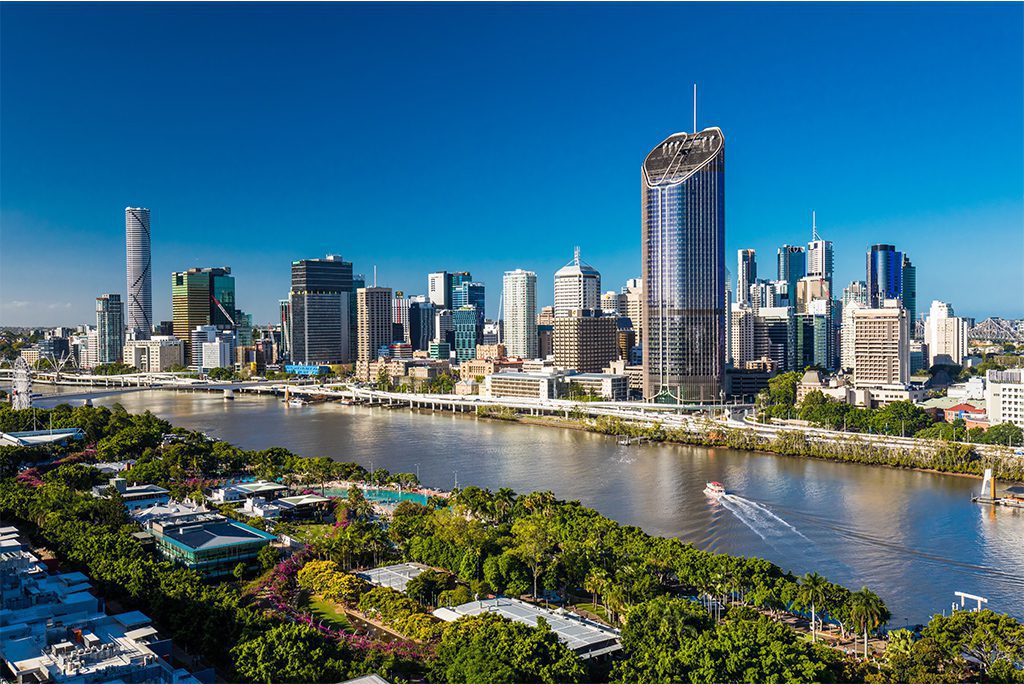
Queensland’s capital city, Brisbane, is a thriving metropolis that welcomes millions of visitors each year with its lovely weather and vibrant culture. With a population of almost 2 million, it is Australia’s third-most populous metropolis, after only Sydney and Melbourne. Many tourists pass through on their route to or from the amazing resorts and beaches to the north and south of the Sunshine State.
Located on the banks of the Brisbane River, the city is known for its pleasant year-round temperature, making it an ideal location for a wide variety of outdoor pursuits. Brisbane is a terrific place to see a performance, and the city’s lively music industry has made it one of the world’s music capitals. Brisbane is not to be missed because of the abundance of fantastic dining and drinking options.
7. Tasmania
The island of Tasmania, albeit geographically separated from the rest of Australia, is nonetheless a popular tourist destination because of the government’s efforts to conserve the state’s abundant natural resources by setting aside about half of the island as a protected park.
Exploring its landscape is utterly captivating, with its stark nature and alpine plateaus intermingled with beautiful white beaches, waterfalls, and woods. Just as enjoyable is a boat ride along its rocky shore, where you might see dolphins, penguins, or seals.
Hobart, the capital city, is home to some of the best restaurants and pubs in the state because of the abundance of fresh, high-quality local ingredients used in their preparation. Throughout the year, the island plays host to a slew of fun festivals where visitors may sample the island’s brews and listen to live music and other performances.
6. Whitsunday Islands
The Whitsunday Islands, located in the tropical seas off the northeastern coast of Queensland, are a popular tourist destination in Australia. As it is part of the Great Barrier Reef, most of the archipelago falls inside national parks, thus beautiful landscapes and picture-perfect beaches abound.
The Whitsundays are a fantastic location for snorkelling and scuba diving due to the abundant marine life and vibrant coral reefs that can be found there. As well as basking on its sun-kissed shores, visitors love to set sail among the area’s 74 islands and islets. The archipelago is home to one of the most stunning beaches anywhere: Whitehaven Beach.
The Whitsunday Islands are renowned for their breathtaking scenery, but few people realise that they are also the location of some of Australia’s earliest Aboriginal archaeological sites. Since the once-beautiful islands are now mostly abandoned and underdeveloped except for a scattering of resorts and campgrounds, visitors should plan their excursions and activities at Airlie Beach, located on the mainland.
5. Melbourne
Melbourne, the state capital, is the second-most populous city in Australia. Melbourne is the cultural heart of Australia and a major port on the enormous natural harbour of Port Phillip on the country’s southern corner. Citizens from all over the globe have come to the streets due to the great quality of life. The city’s ethnic population is reflected in its varied cuisine and interesting districts.
The majority of Melbourne’s sights, such as the iconic Flinders Street Railway Station, can be found in the city’s City Center. The station’s entrance from the Edwardian era was a popular gathering place due to the several clocks hanging over it. Eureka Tower is the tallest building in the southern hemisphere and is home to the highest observation deck in the region. Glass doors open out to an observation deck where guests may take in sweeping views of the sea and the verdant Dandenong Mountains beyond.
The biggest museum in the Southern Hemisphere is located in the Carlton neighbourhood. In addition to its comprehensive displays on Australia’s natural history, the Melbourne Museum has displays on the country’s rich social past, from its indigenous cultures to its obsession with football and horse racing.
Outdoor tourists may relax in one of the city’s numerous parks, many of which are shaded by towering old trees. Melbourne’s bayside beaches are great places to go swimming and sunbathing. The brightly coloured bathing houses at Brighton Beach evoke a bygone era. St. Kilda Beach is well-liked by locals and visitors alike due to its proximity to both water sports and nightlife options. Visitors visiting Melbourne will be able to keep themselves busy from morning till night.
4. Kakadu National Park
More than 5,000 sites of Aboriginal rock art may be found in Kakadu National Park, which has been inhabited for over 40,000 years. That area has tremendous symbolic and ecological value. The park’s size and the beauty of its natural features, especially the Kakadu Escarpment, make it well worth a visit.
The park protects a wide range of habitats, so in the span of a day you may be climbing amid desolate sandstone cliffs, swimming in pools and waterfalls, and studying old rock art. Kakadu is a big park, so even though it may become crowded, you can still enjoy it without any trouble if you venture away from the main roads.
3. Great Barrier Reef
It’s hard to overstate the sheer size of the Great Barrier Reef, the world’s biggest coral reef system. The Great Barrier Reef is a large region of more than 2,900 coral reefs and hundreds of islands and cays in the Coral Sea off the coast of Australia’s state of Queensland. The Reef is one of the most varied and complicated ecosystems on Earth since it was formed by millions of living species over millions of years.
The Great Barrier Reef Marine Park safeguards the reef, which has long been known and utilised by Torres Strait Islander and Aboriginal Australian peoples. There is a tremendous variety of marine life here, including whales, dolphins, marine turtles, sea snakes, and birds of many different kinds that nest among the many little islands.
Taking one of the many boat trips that depart from the northern coast of Queensland is the best way to see the reef. Although Cairns is widely recognised as the primary entry point to the Great Barrier Reef, visitors may also embark on cruises from Townsville, Port Douglas, Yeppoon, Mission Beach, and Cooktown.
These cruises may last anything from a single day to many weeks, and they often stop at several locations to anchor so passengers can swim, snorkel, or dive. Underwater observatories, glass-bottomed boat excursions, and helicopter rides are among the many ways to see the reef.
2. Uluru-Kata Tjuta National Park
One of Australia’s most well-known sights, the reddish colour of Uluru has made it renowned across the world. The massive rock is awe-inspiring to see in person and is the primary draw to this national park. Those lucky enough to get a glimpse of it will never forget its stunning beauty and one-of-a-kind design. While Uluru receives most of the attention, Kata Tijuta’s striking rock formations are fascinating in their own right and make for a great day trip.
The land is sacred to the indigenous Anangu people, who also own the impressive cultural centre, where visitors may learn more about their unique way of life. The breathtaking scenery of this national park makes for some incredible hiking, biking, and sightseeing opportunities.
1. Sydney
Sydney is a fantastic city with many positives and a near-ideal setting. Sydney is an innovative city with a rich history, and its picturesque harbour is its defining feature. For thousands of years, locals have built their homes on the harbor’s edge. In the 1780s, the harbour served as the arrival point for a number of prisoners who were being transported to Australia. Sightseeers may enjoy excursions on boats that carry them under the Sydney Harbor Bridge and past the Sydney Opera House.
Take the boat to Manly Wharf, and from there you may hire kayaks to explore the inlets of Sydney Harbor National Park, or sign up for surf lessons at Manly Beach, both of which are popular activities among more daring tourists. Starting in Raleigh Reserve Park, the 3-mile-long (5-kilometer) Federation Cliff Walk leads to breathtaking vistas of the ocean, the port, and the Macquarie Lighthouse, Australia’s earliest and oldest continuously operational lighthouse.
There’s nothing better than spending a hot summer day at one of Sydney’s beaches, whether you want to swim or simply lounge in the sun. Even while Bondi, Manly, and Coogee are the most well-known, each of the other Sydney beaches has its own unique appeal.
Those who come to Sydney should definitely check out the Opera House. The sailing ship–inspired performing arts centre, designed by Danish architect Jrn Utzon and finished in 1973, is often cited as one of the world’s most remarkable buildings.
Those who are feeling particularly daring during their time in Sydney can consider attempting a climb up the Harbour Bridge. For others, a vacation to Sydney isn’t complete without a trip to the world-famous Taronga Zoo, a night out at one of the many clubs and restaurants in the Rocks neighbourhood, or a trip to the iconic Queen Victoria Building. The cosmopolitan city of Sydney has something for everyone.


